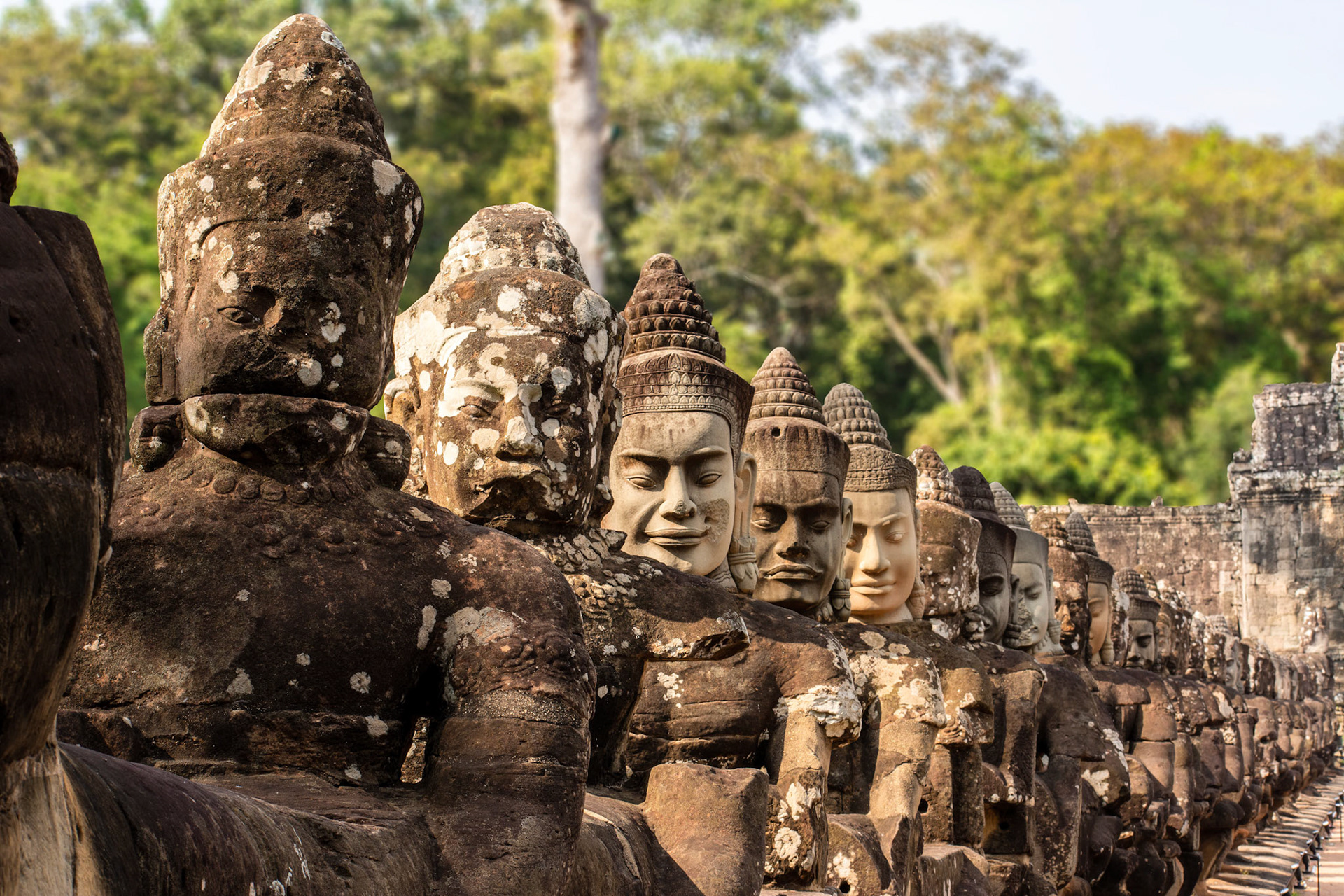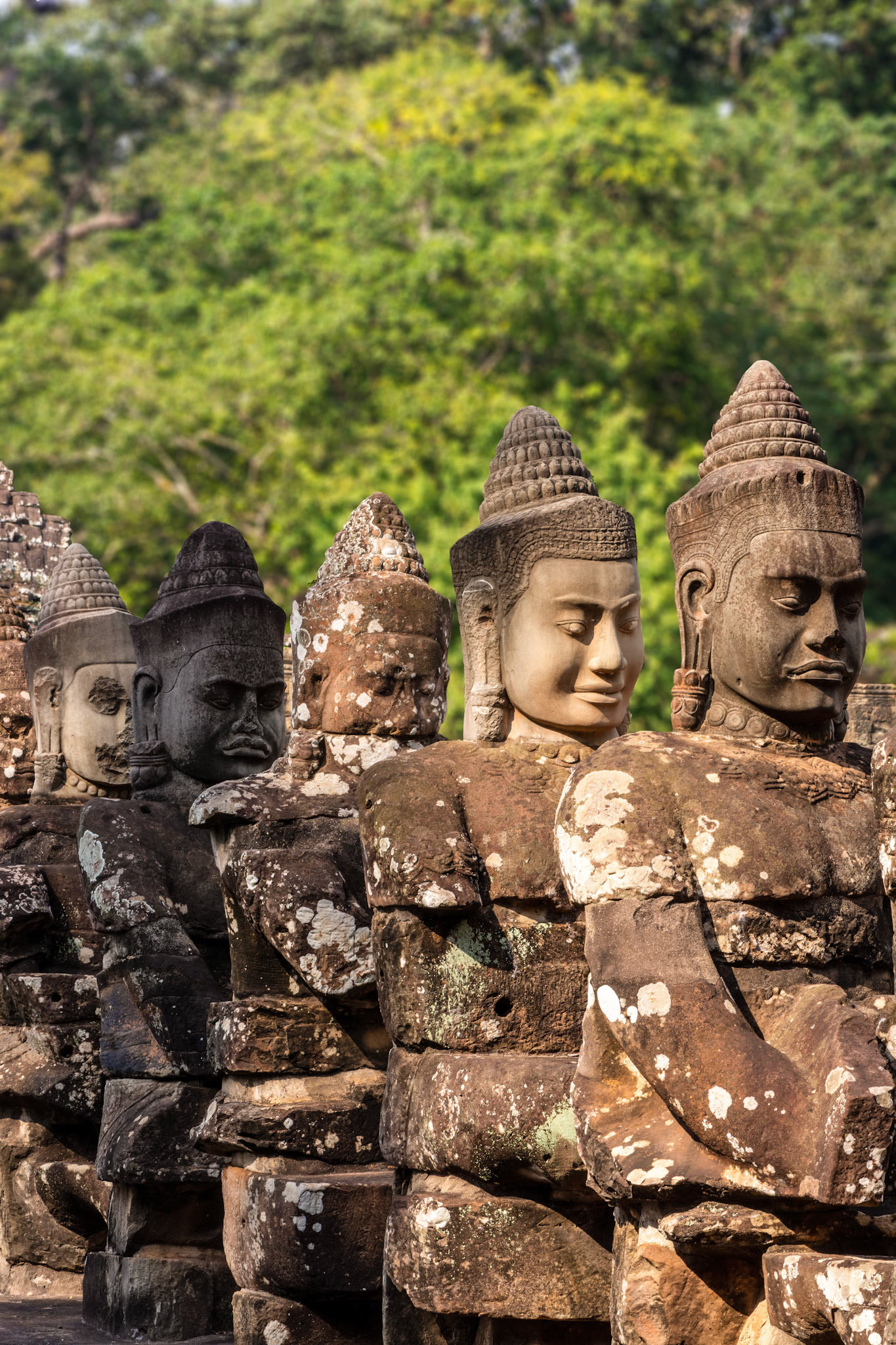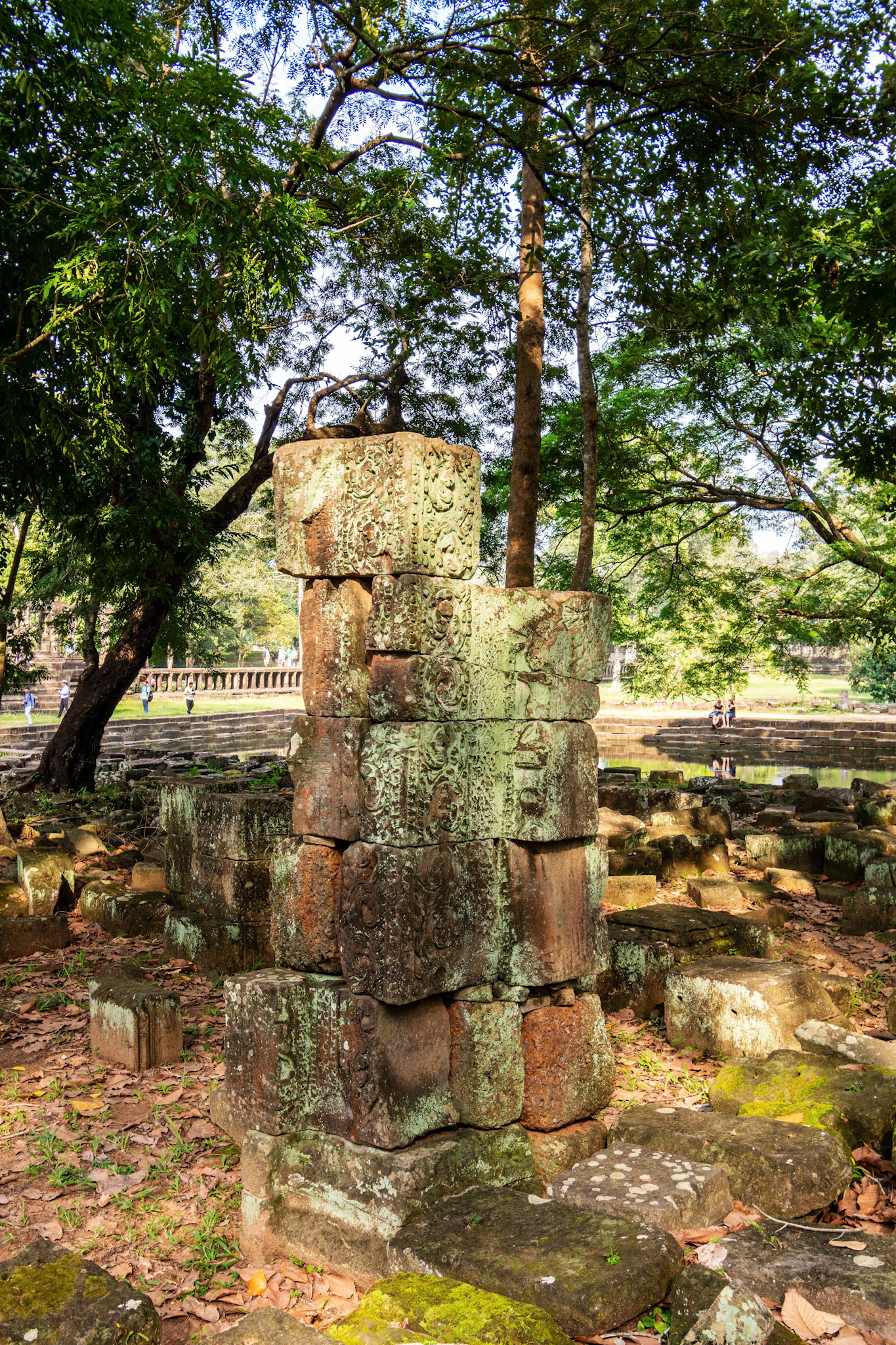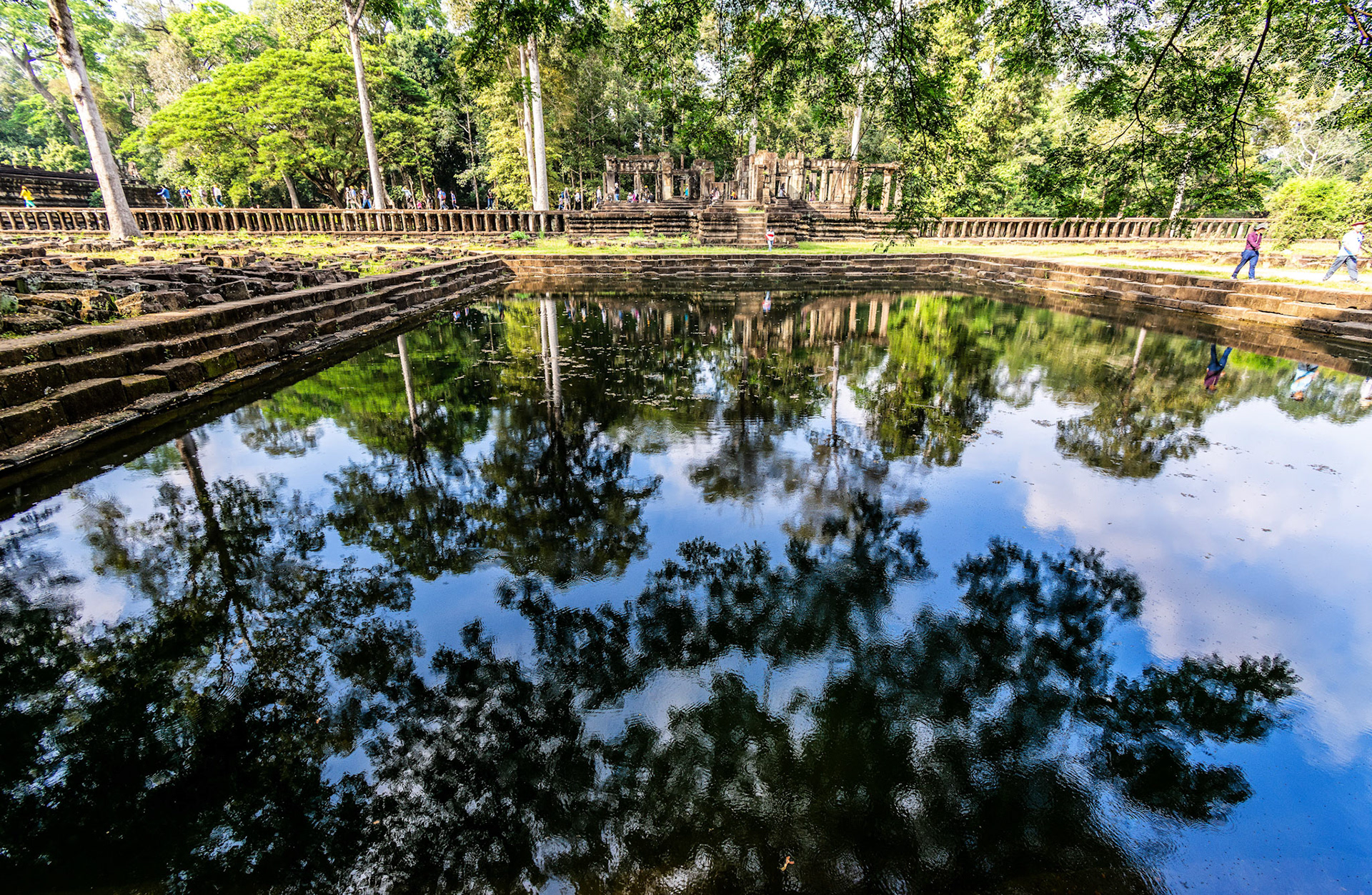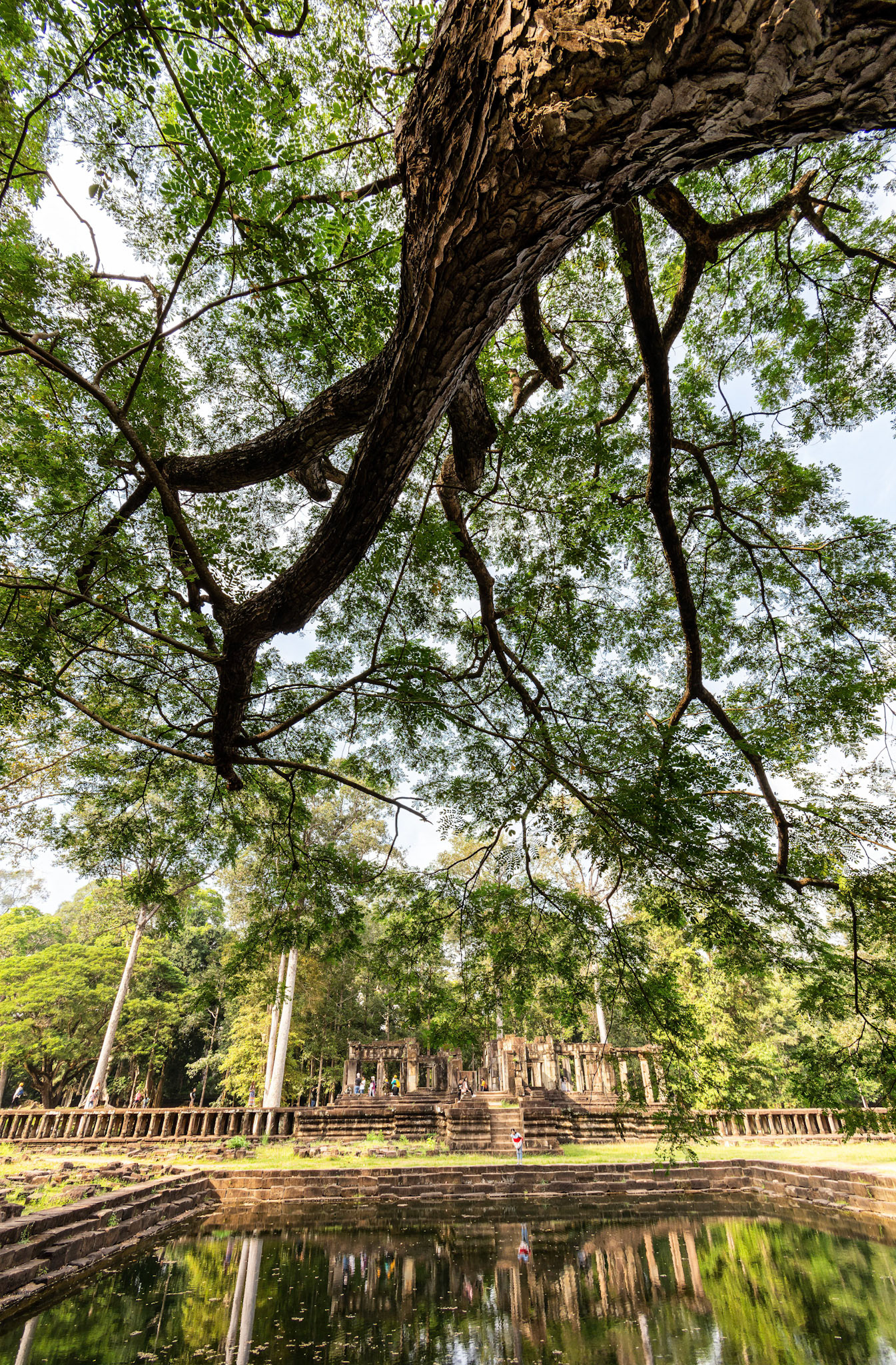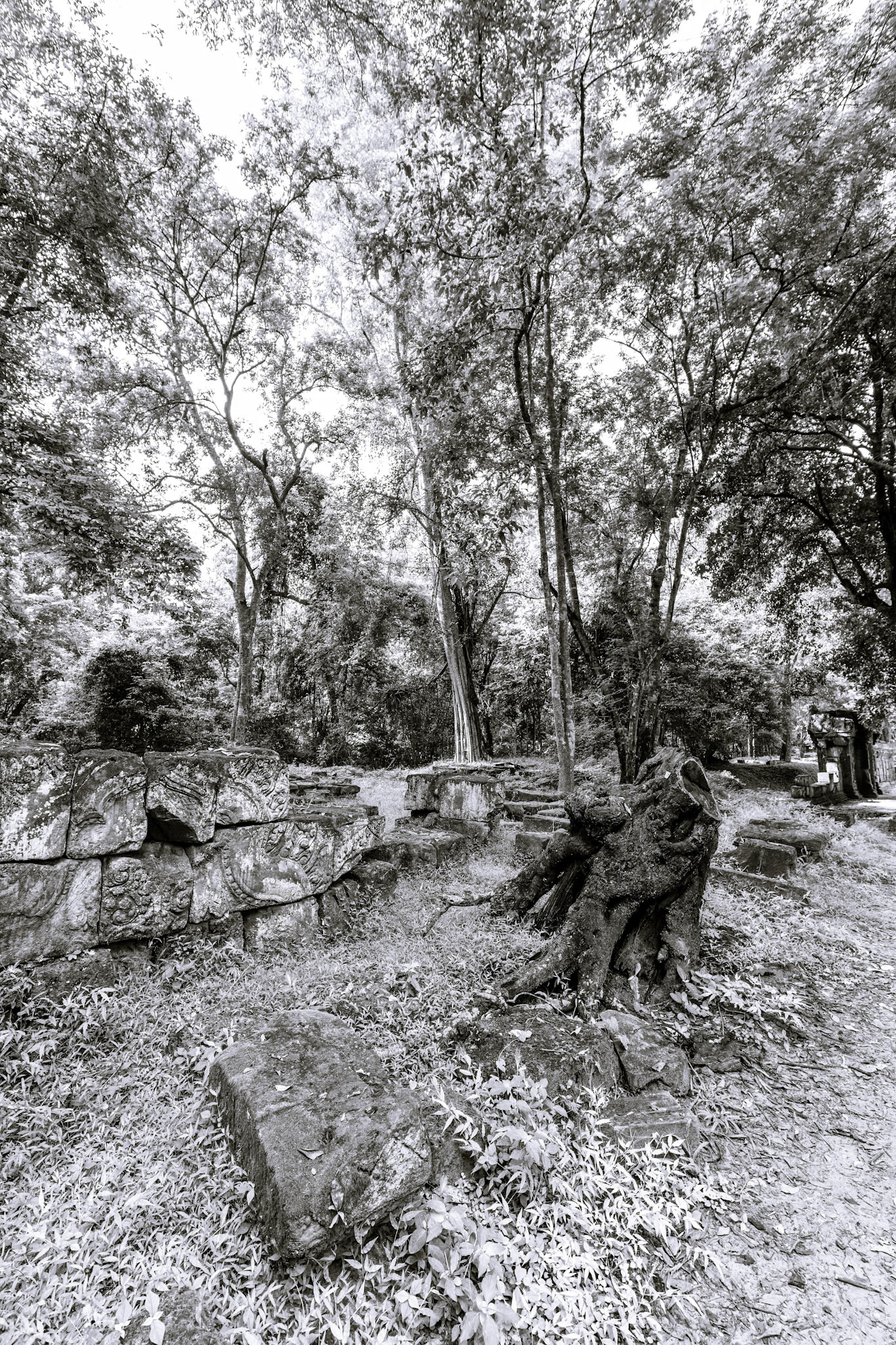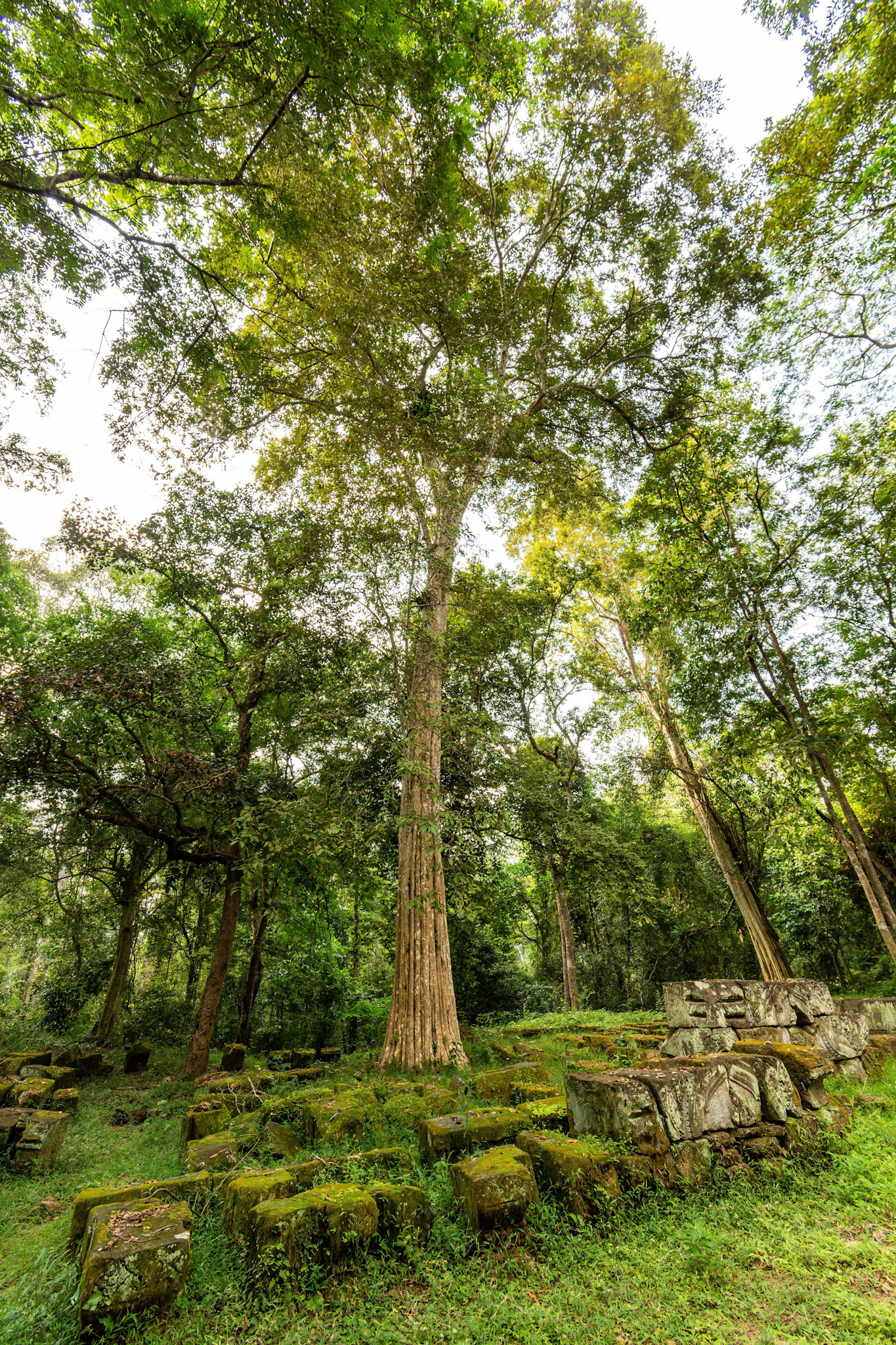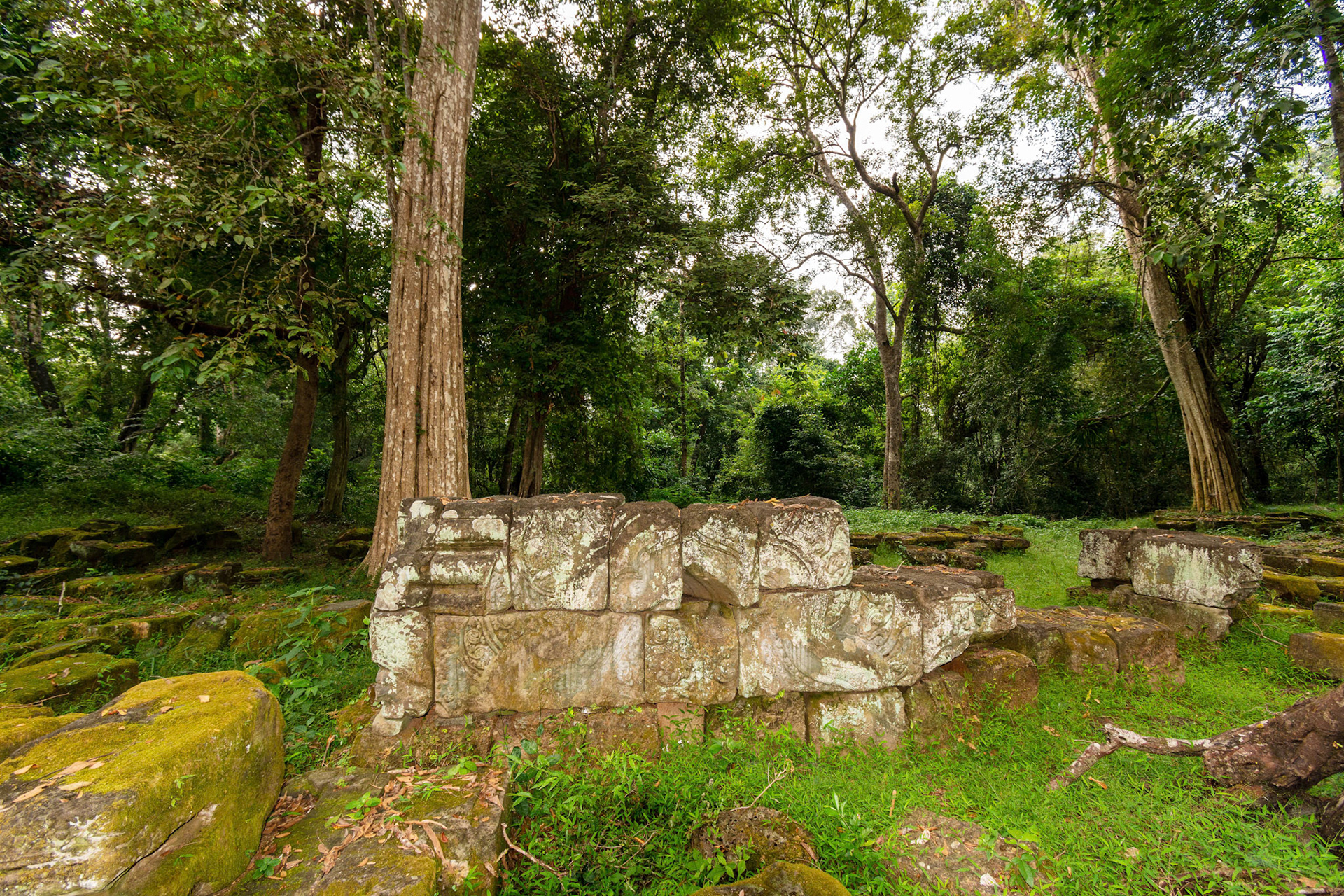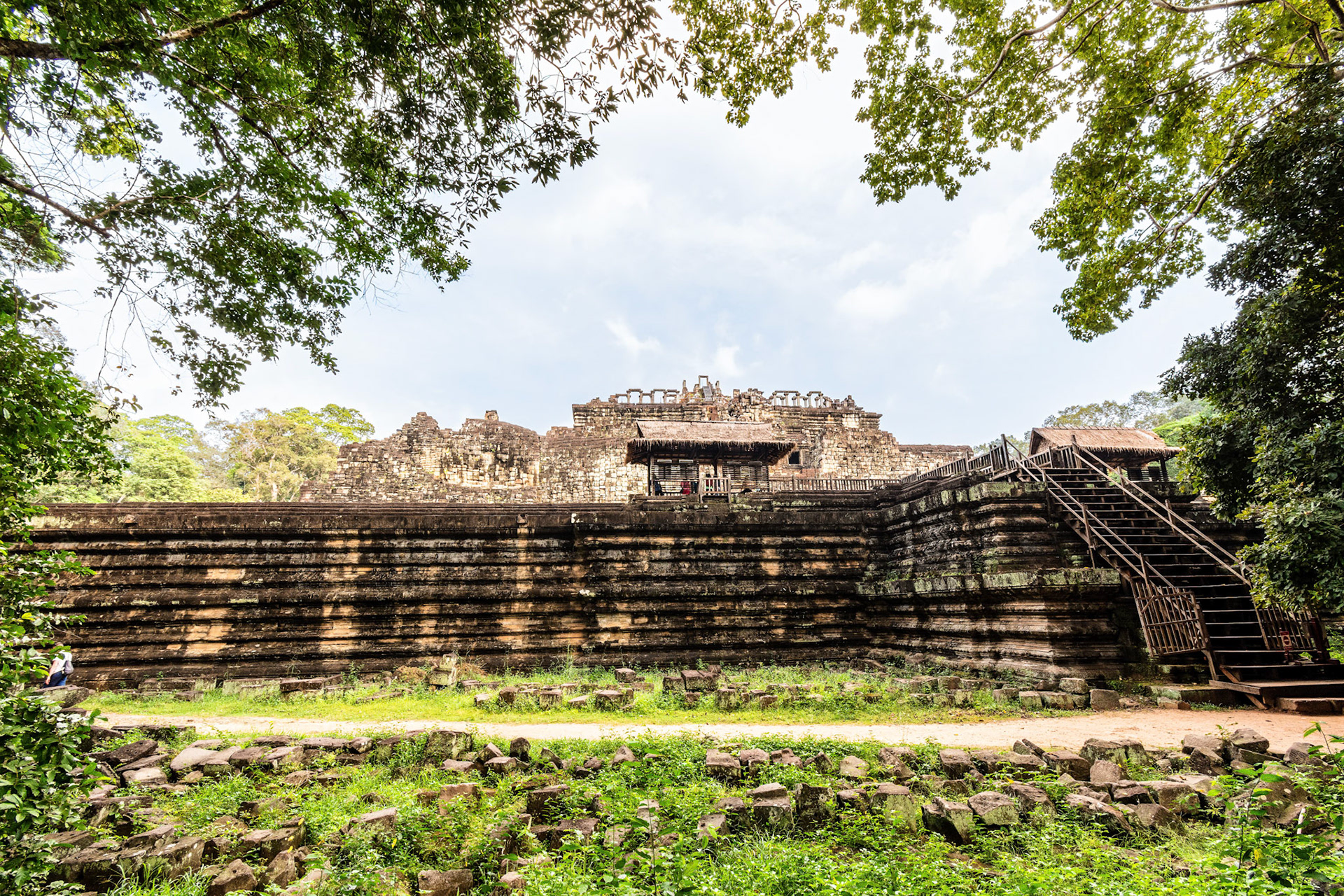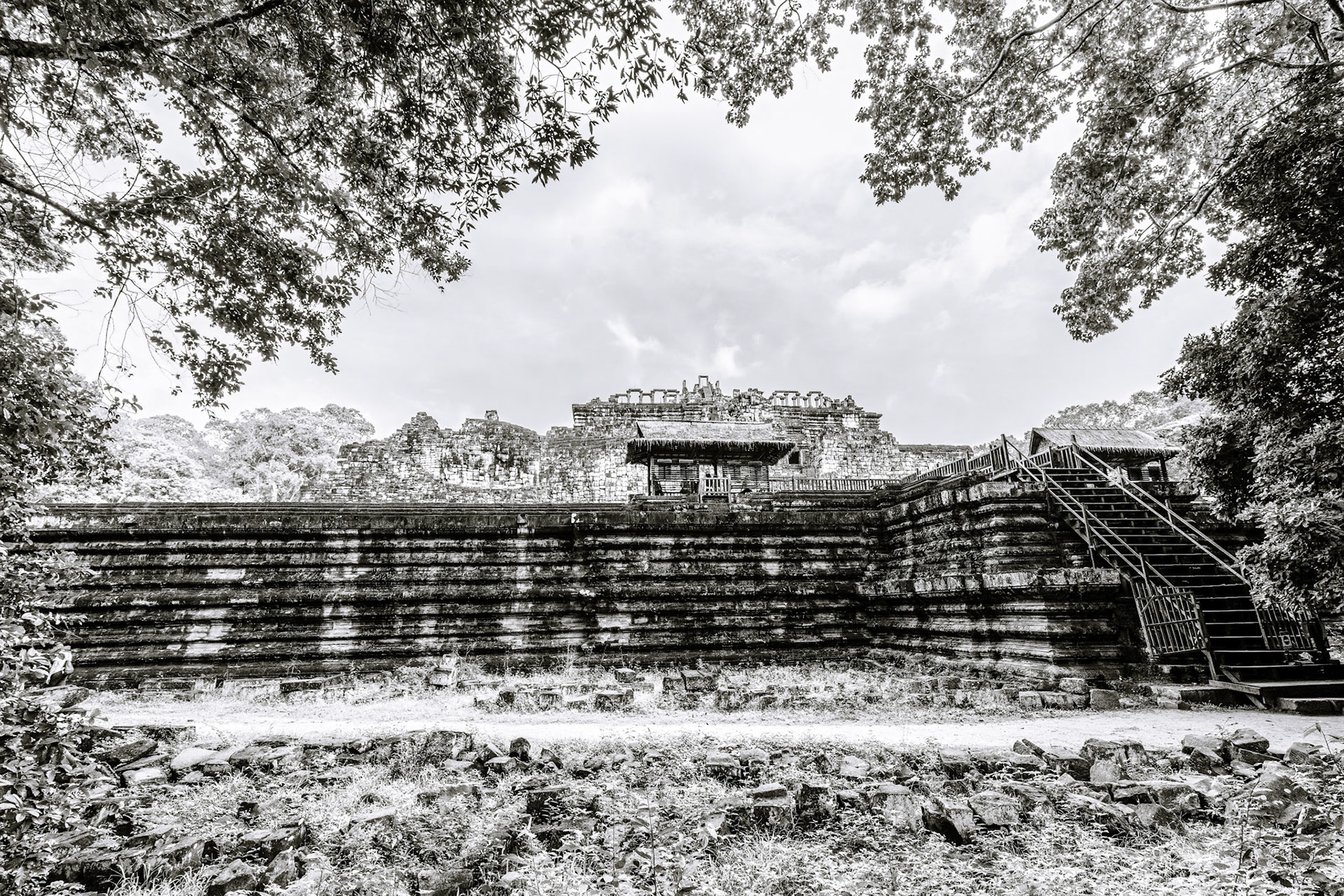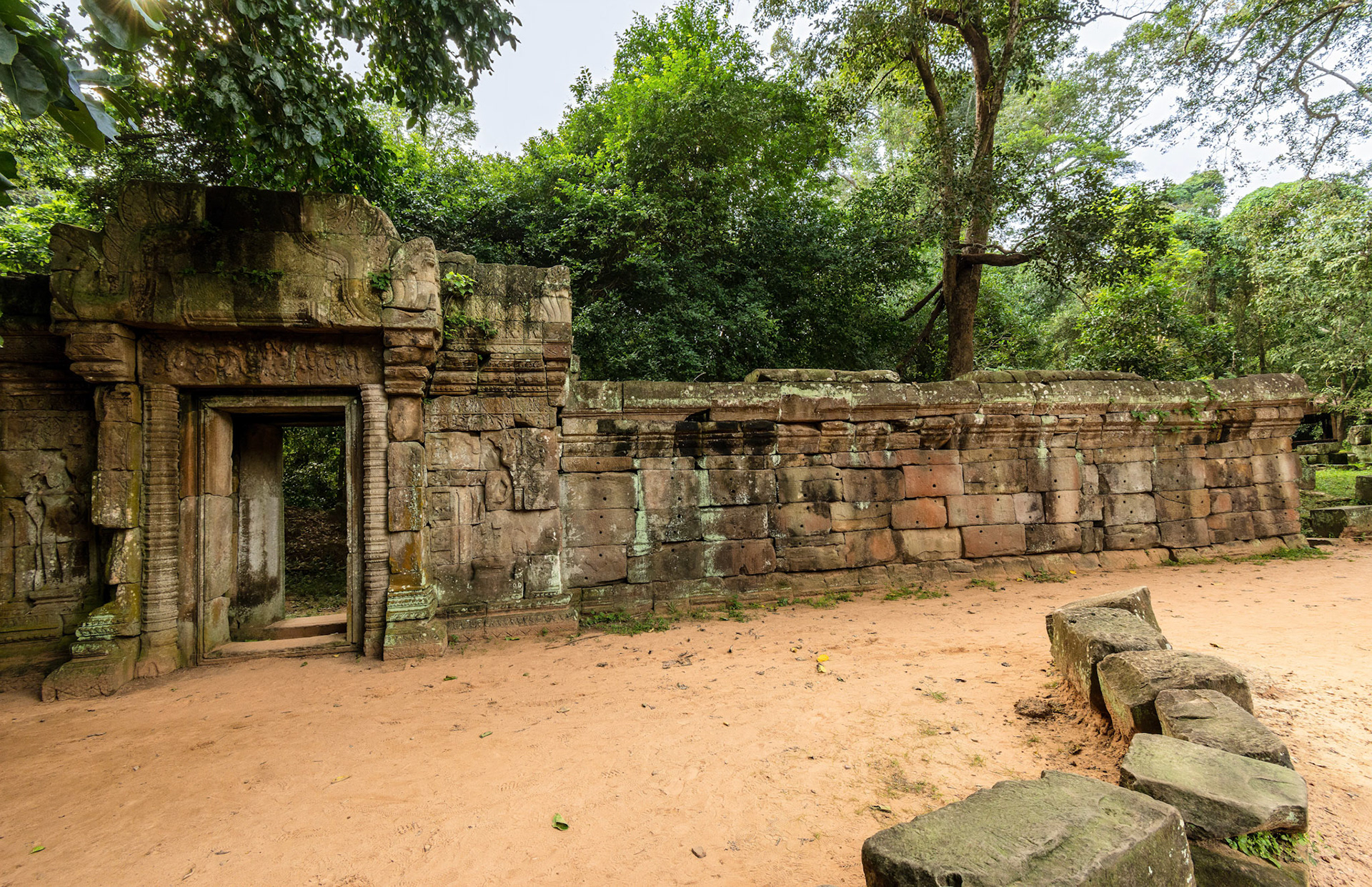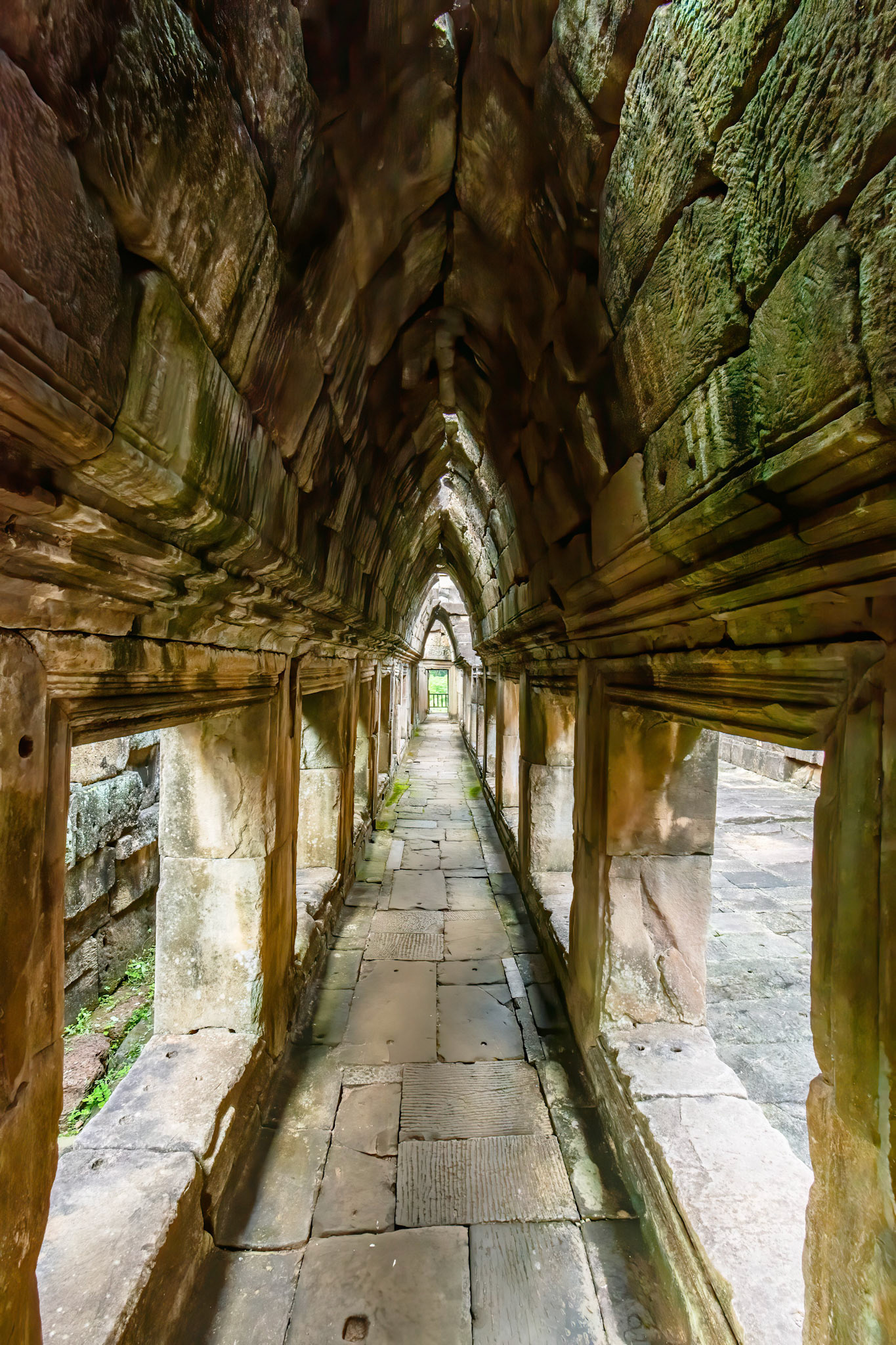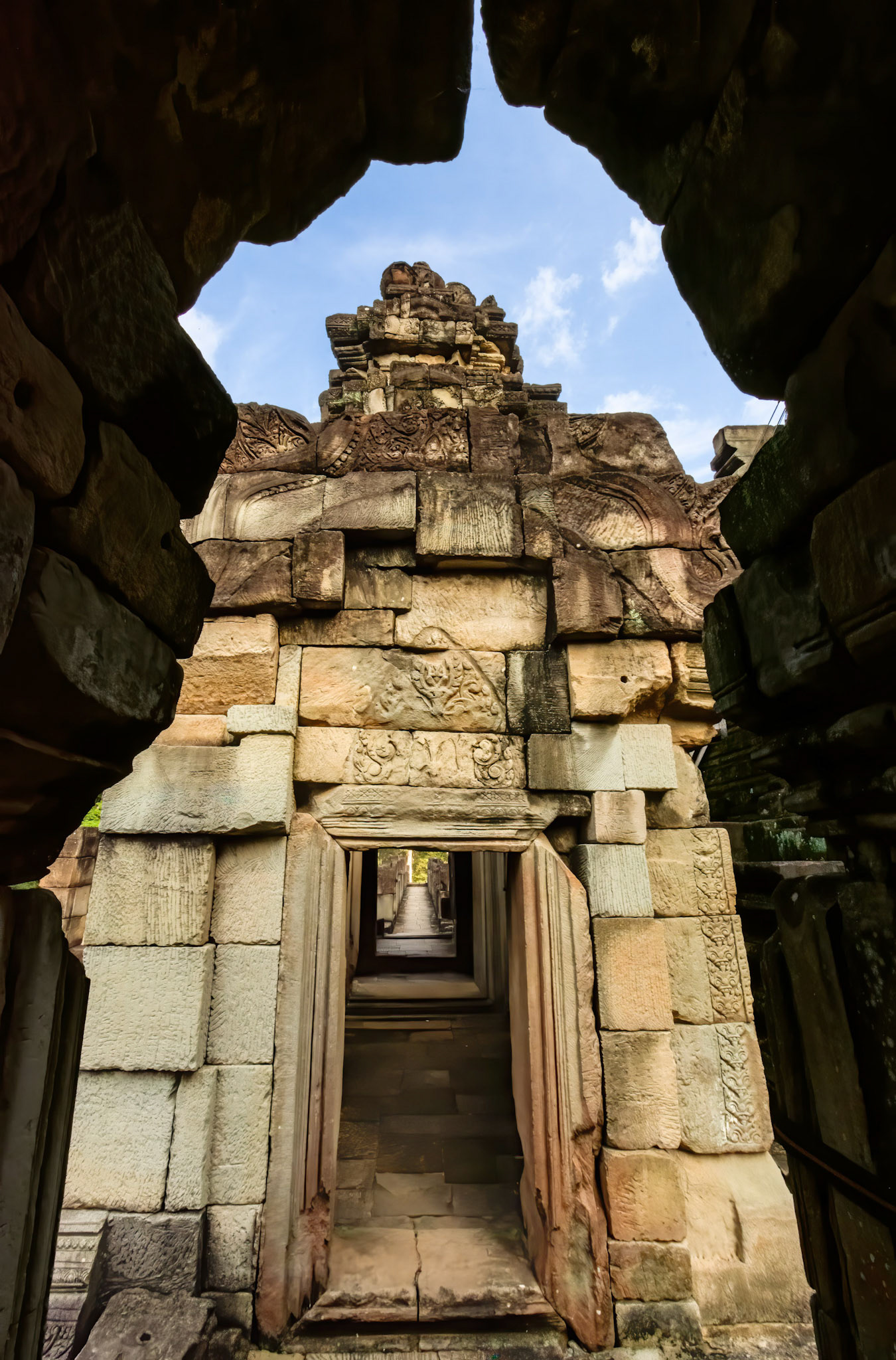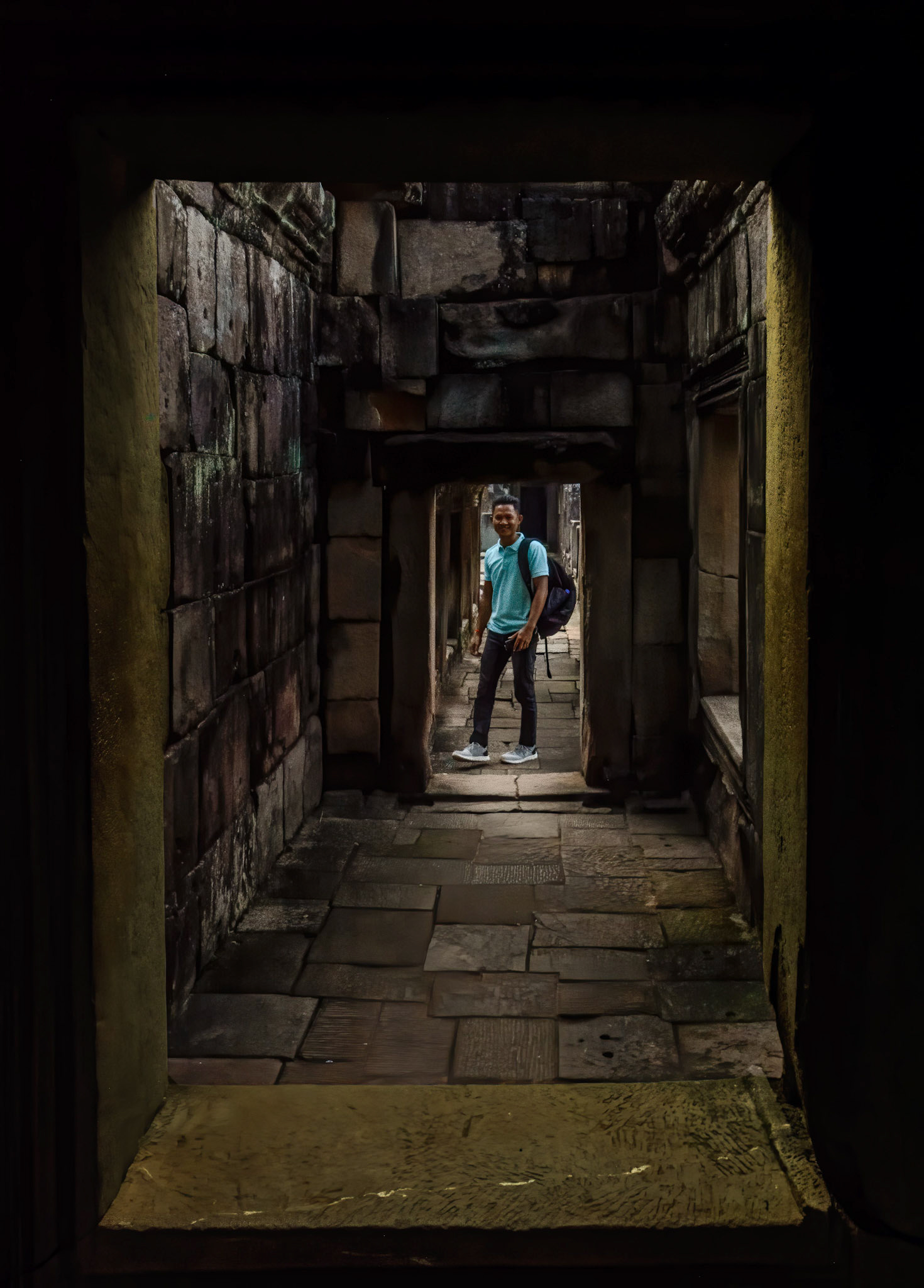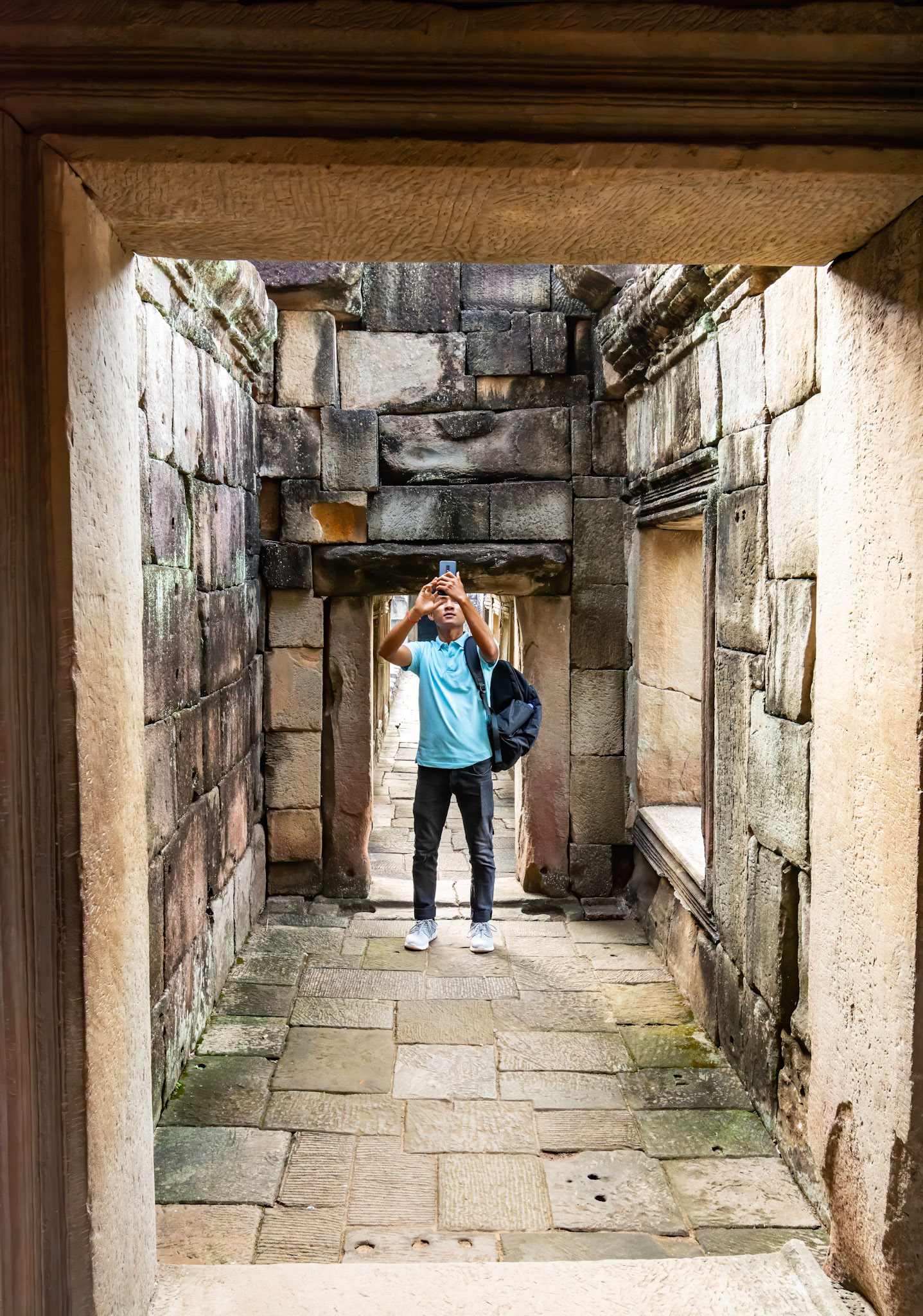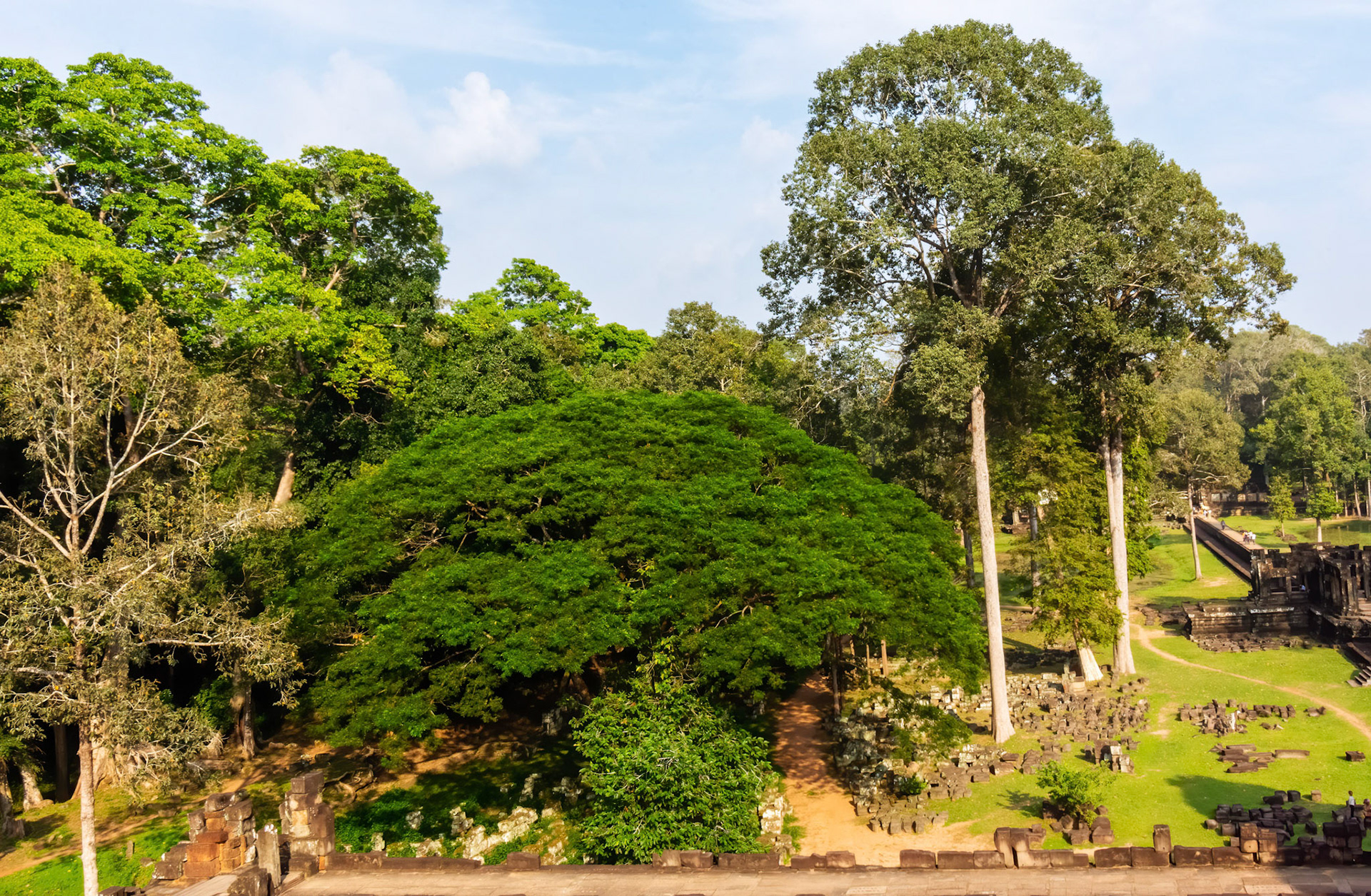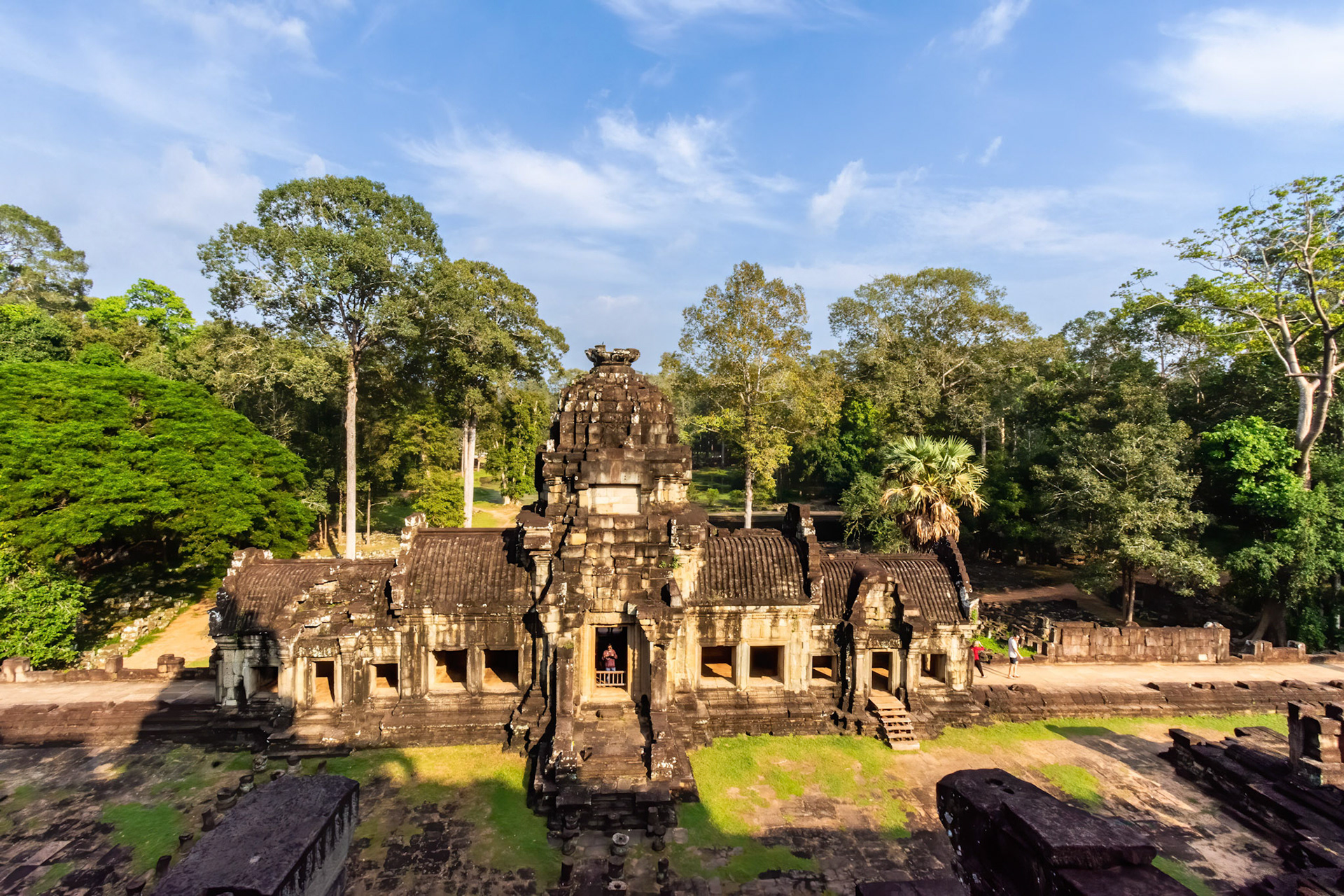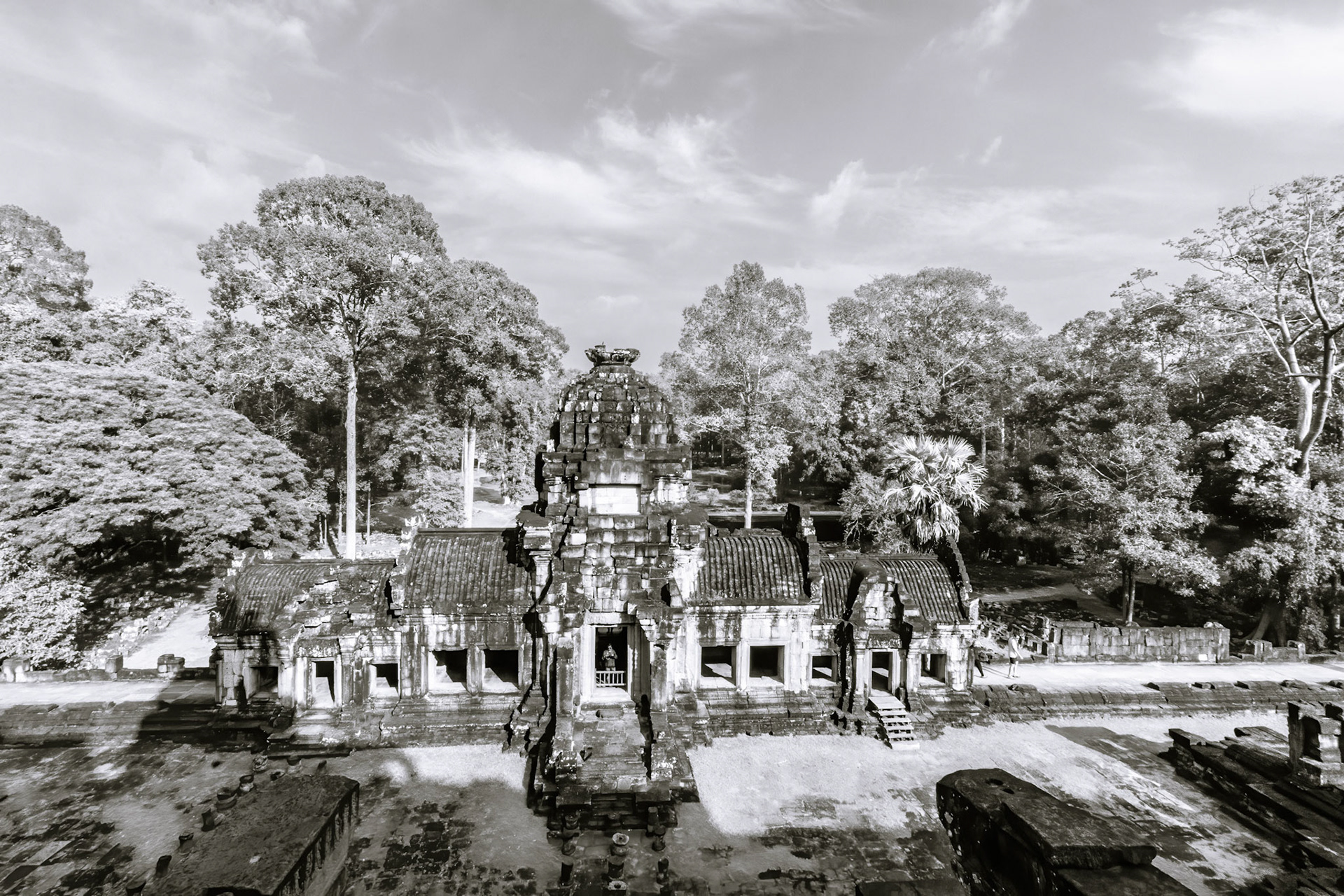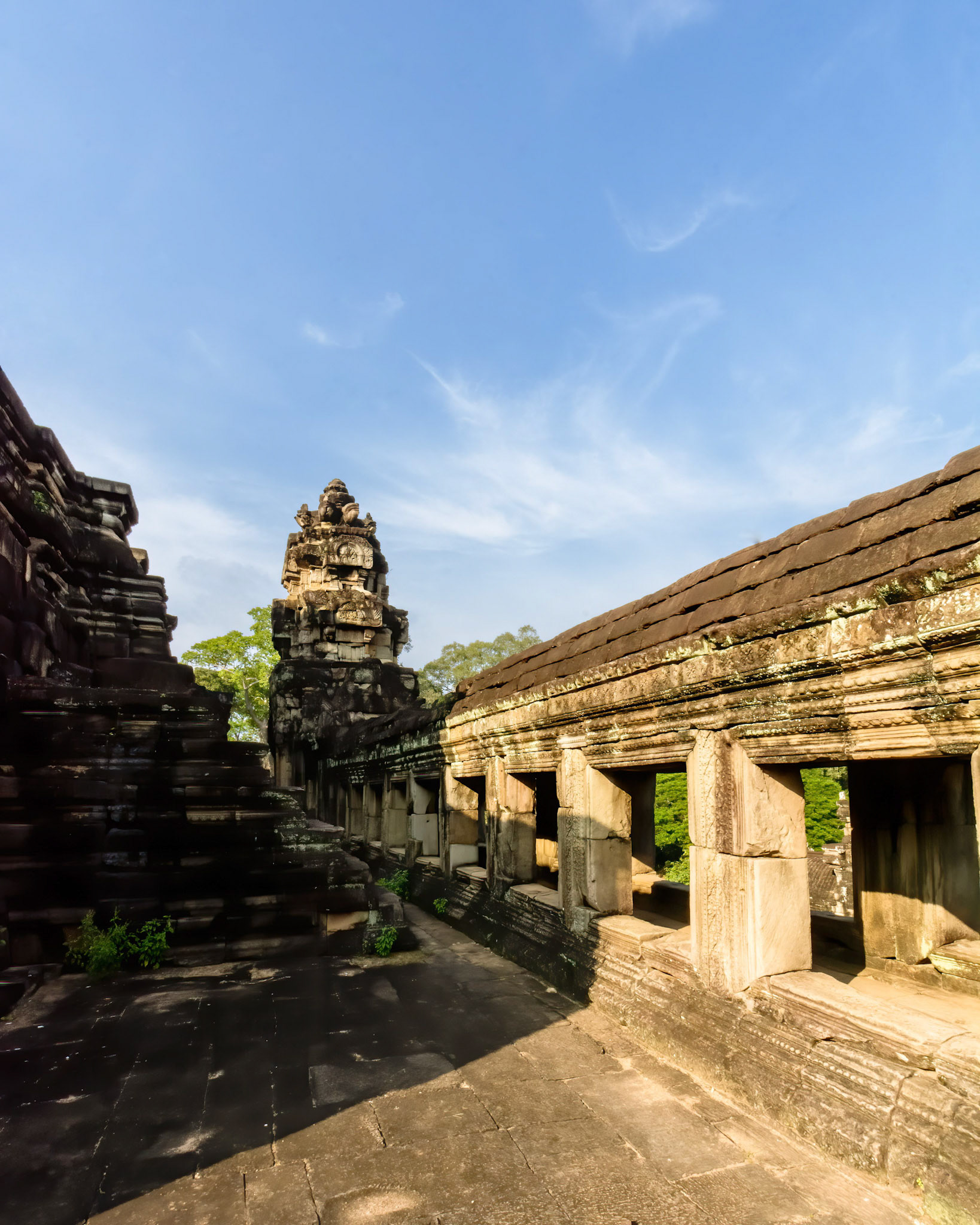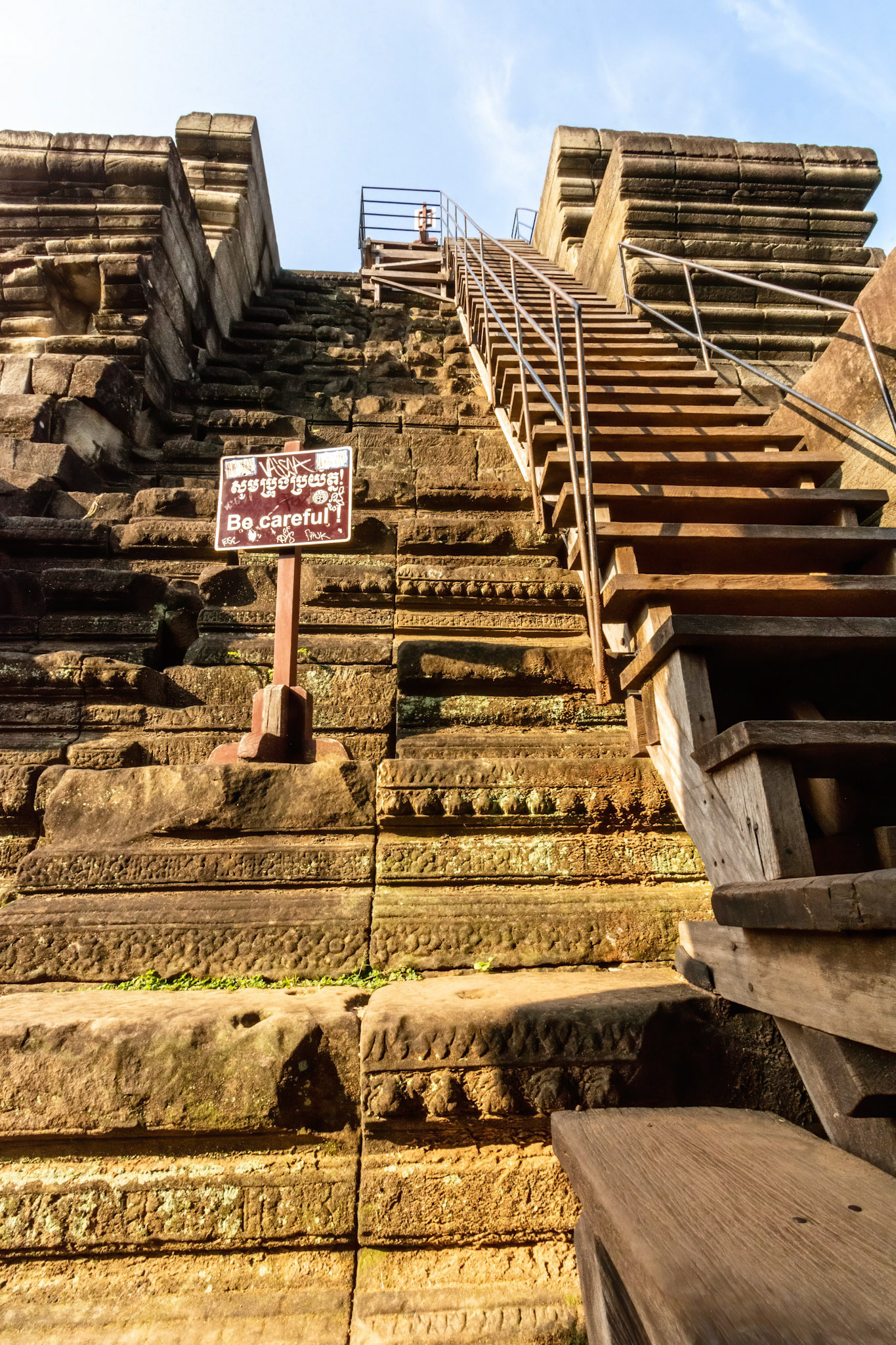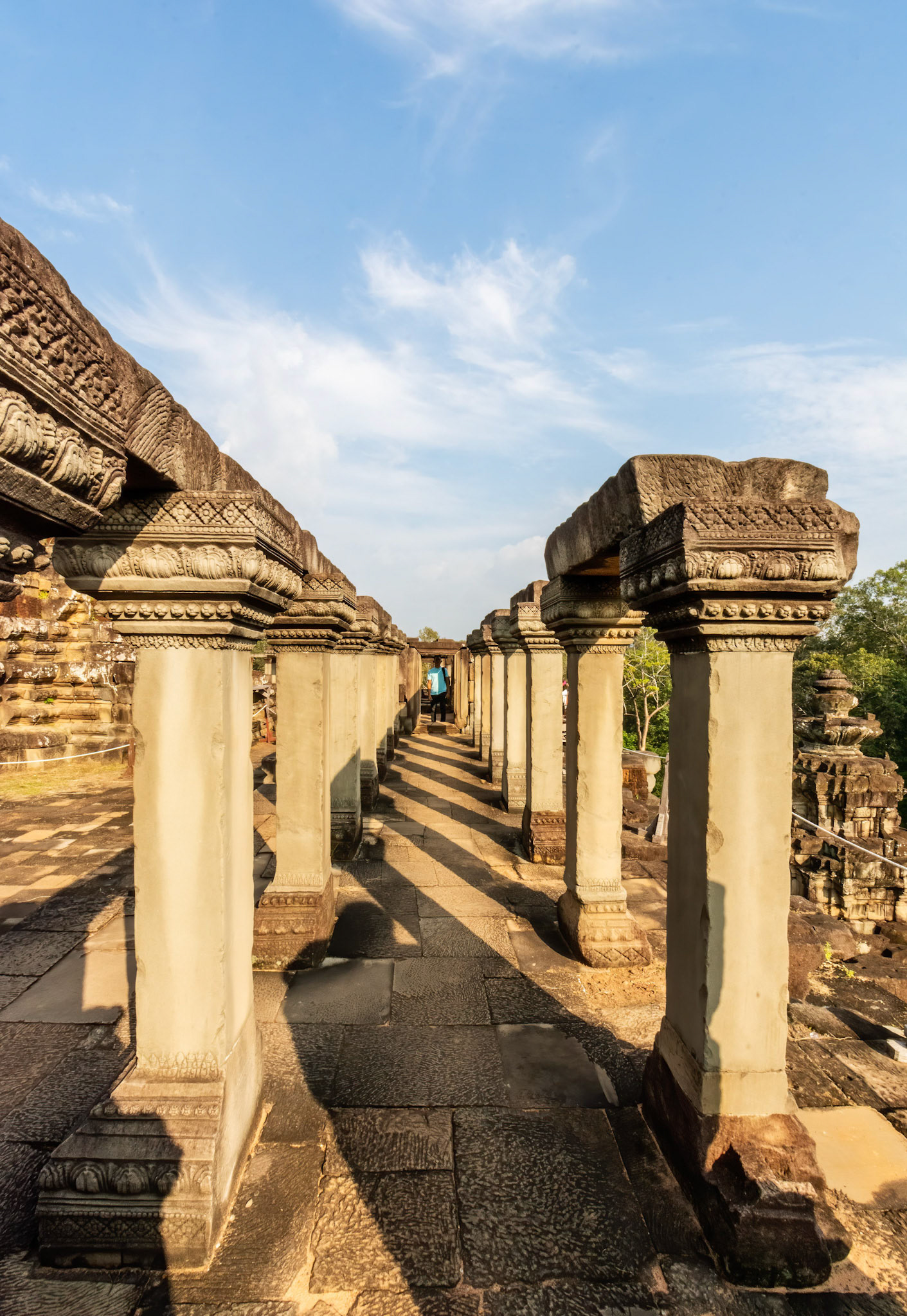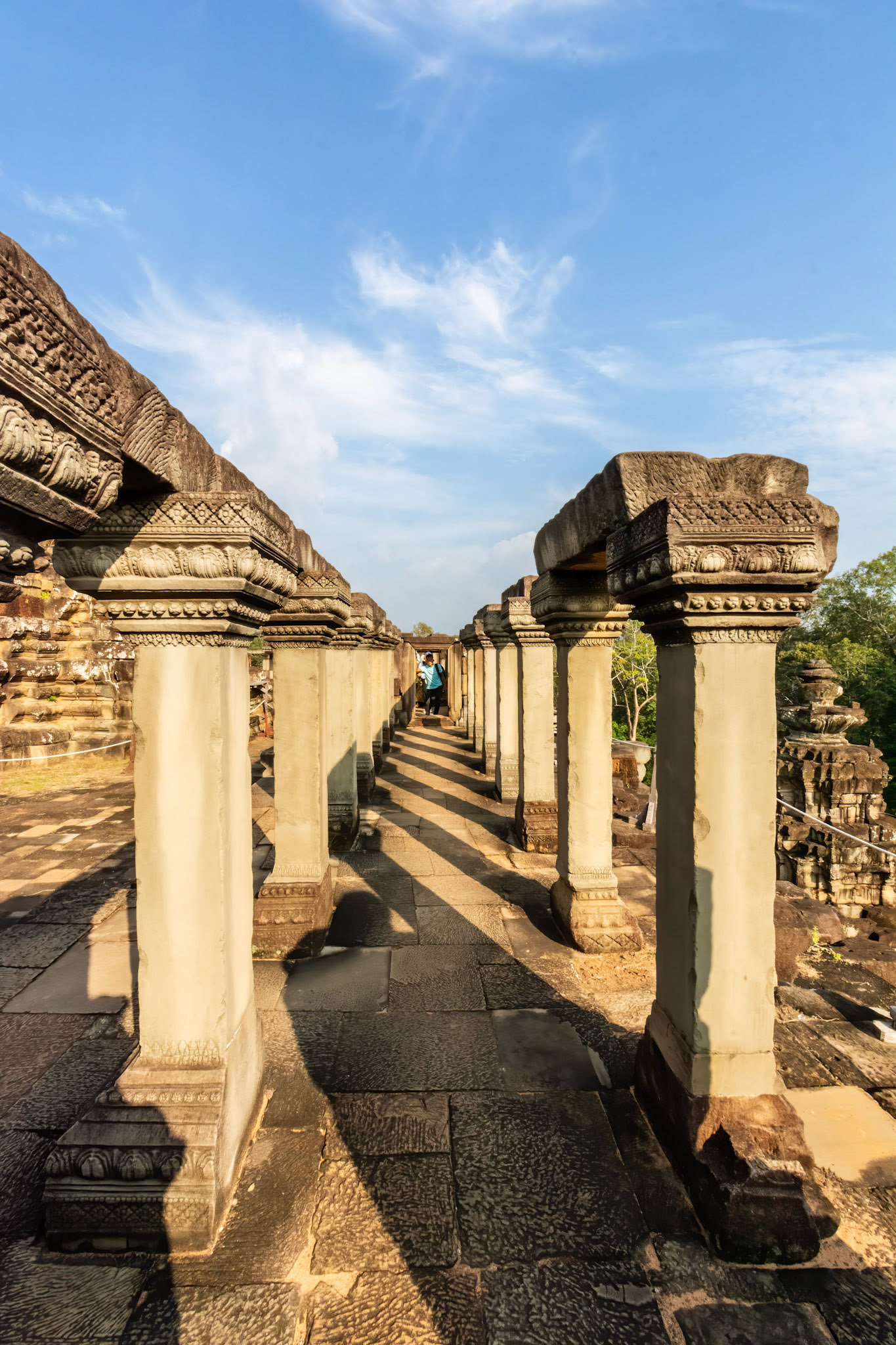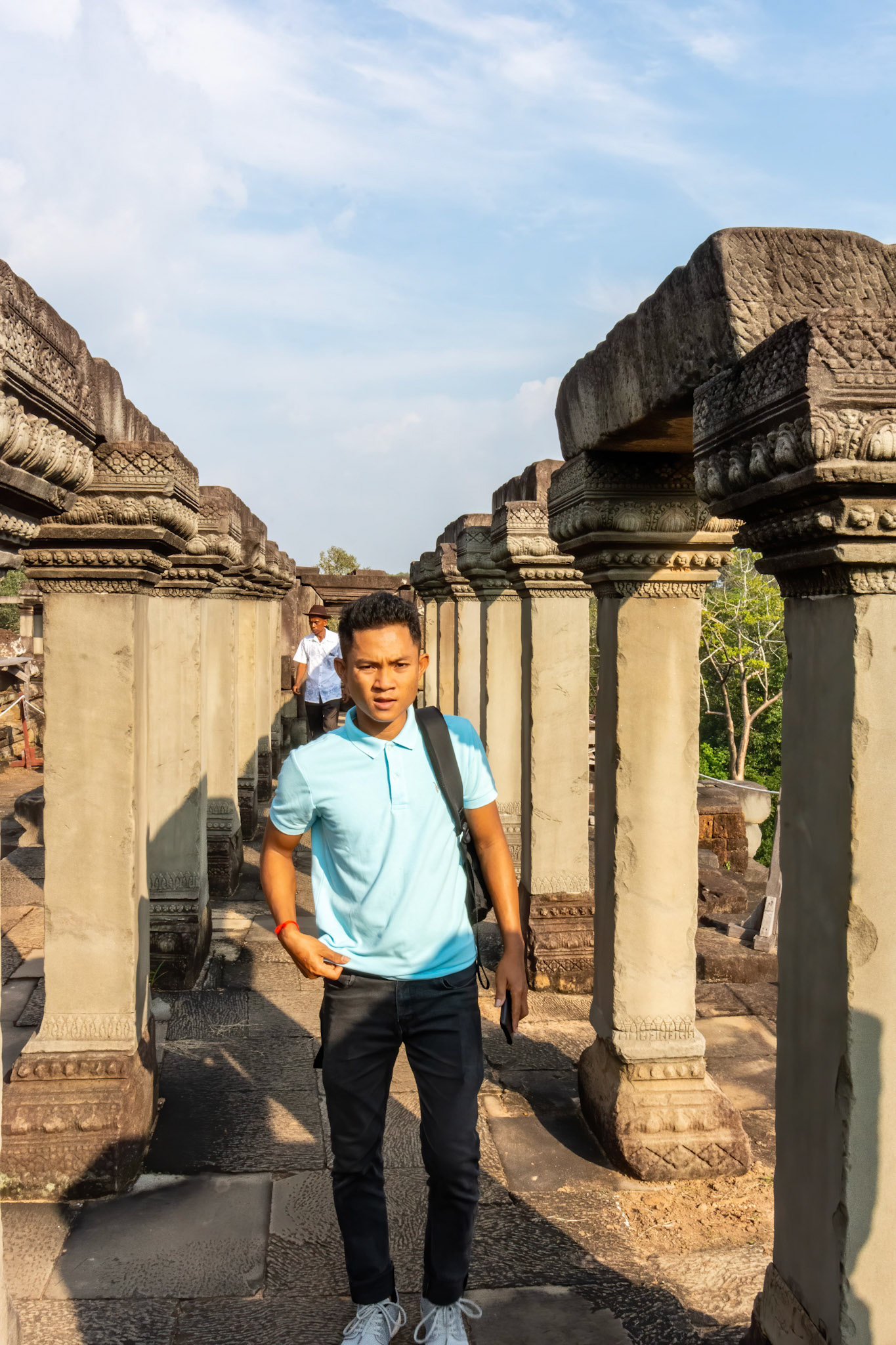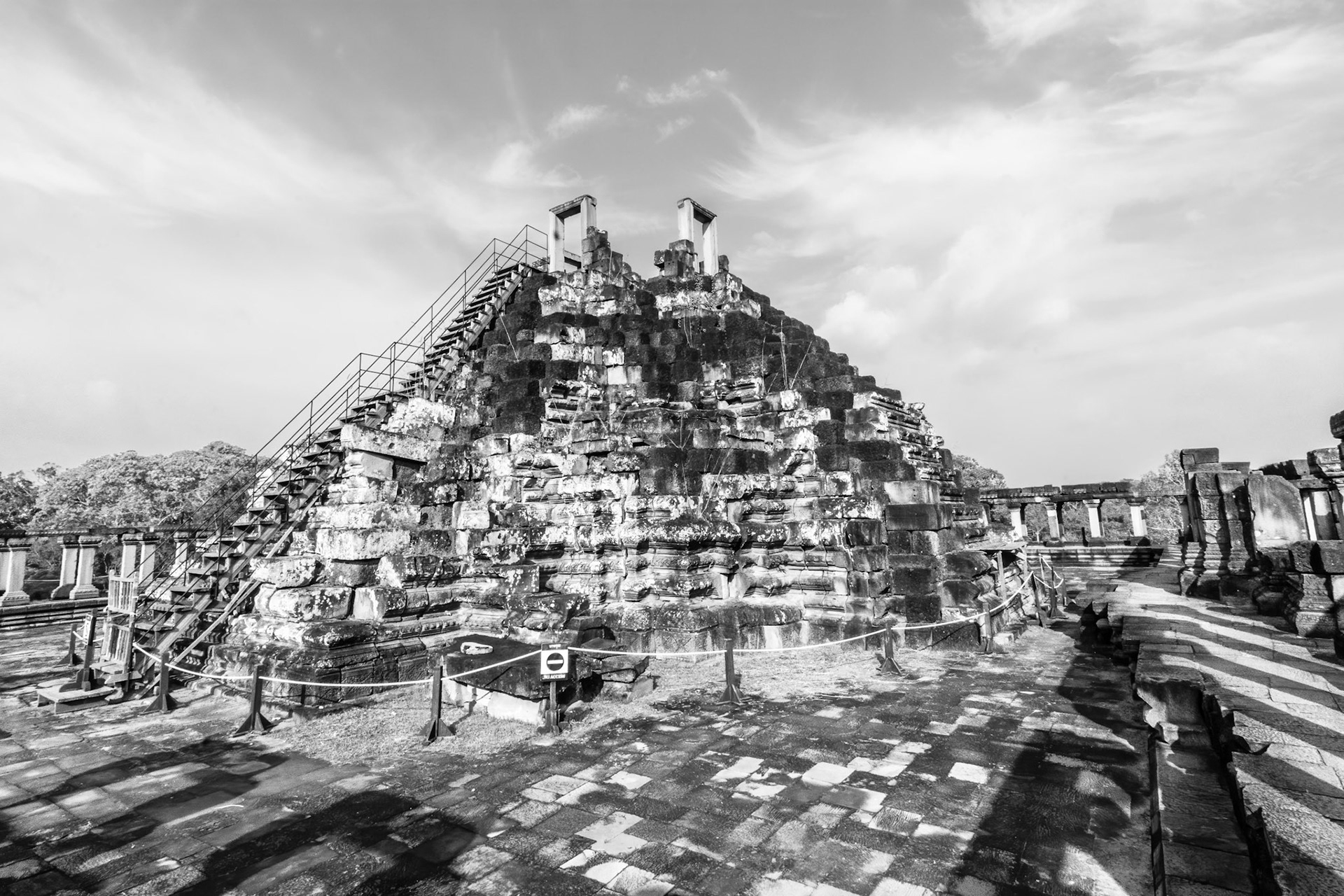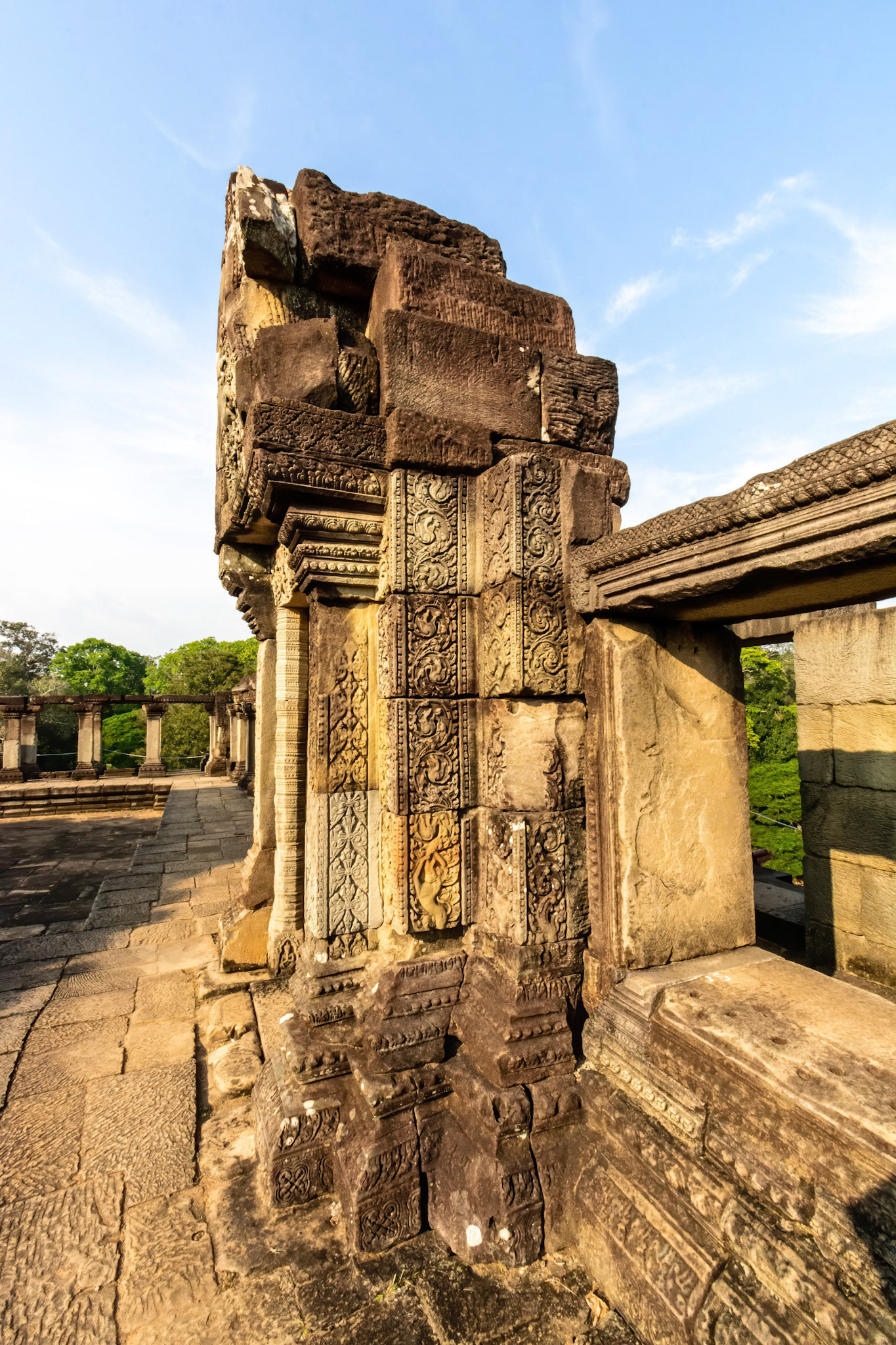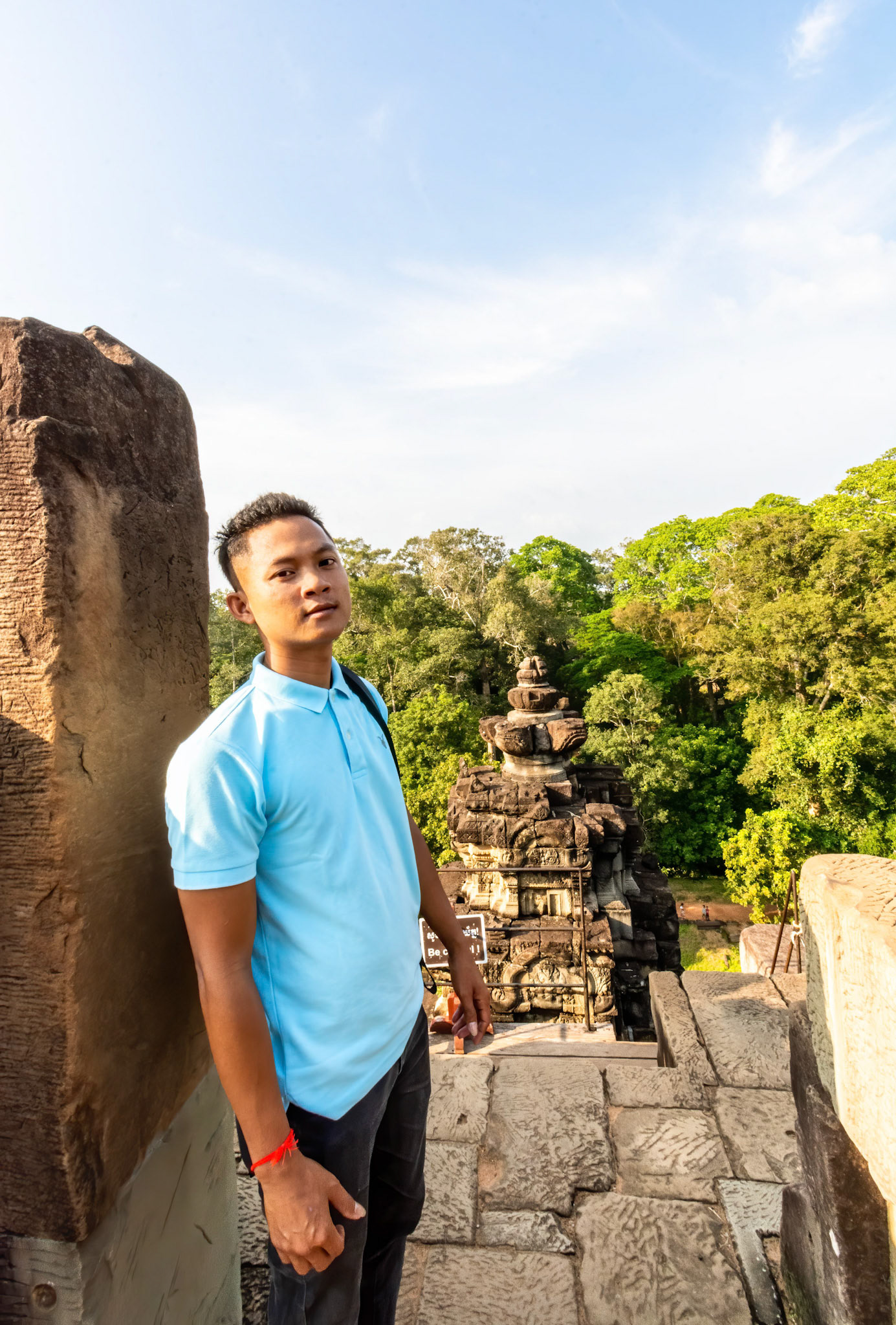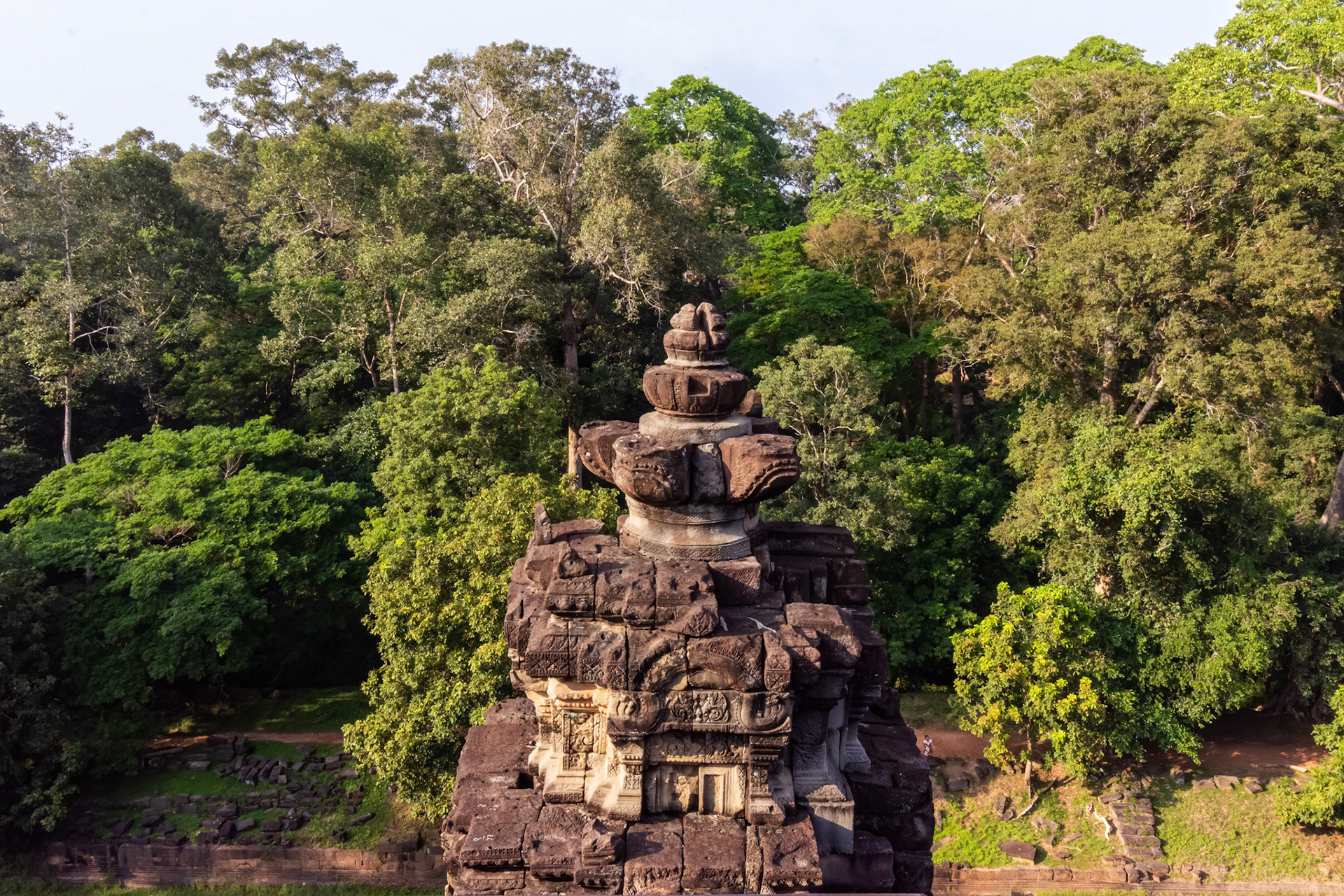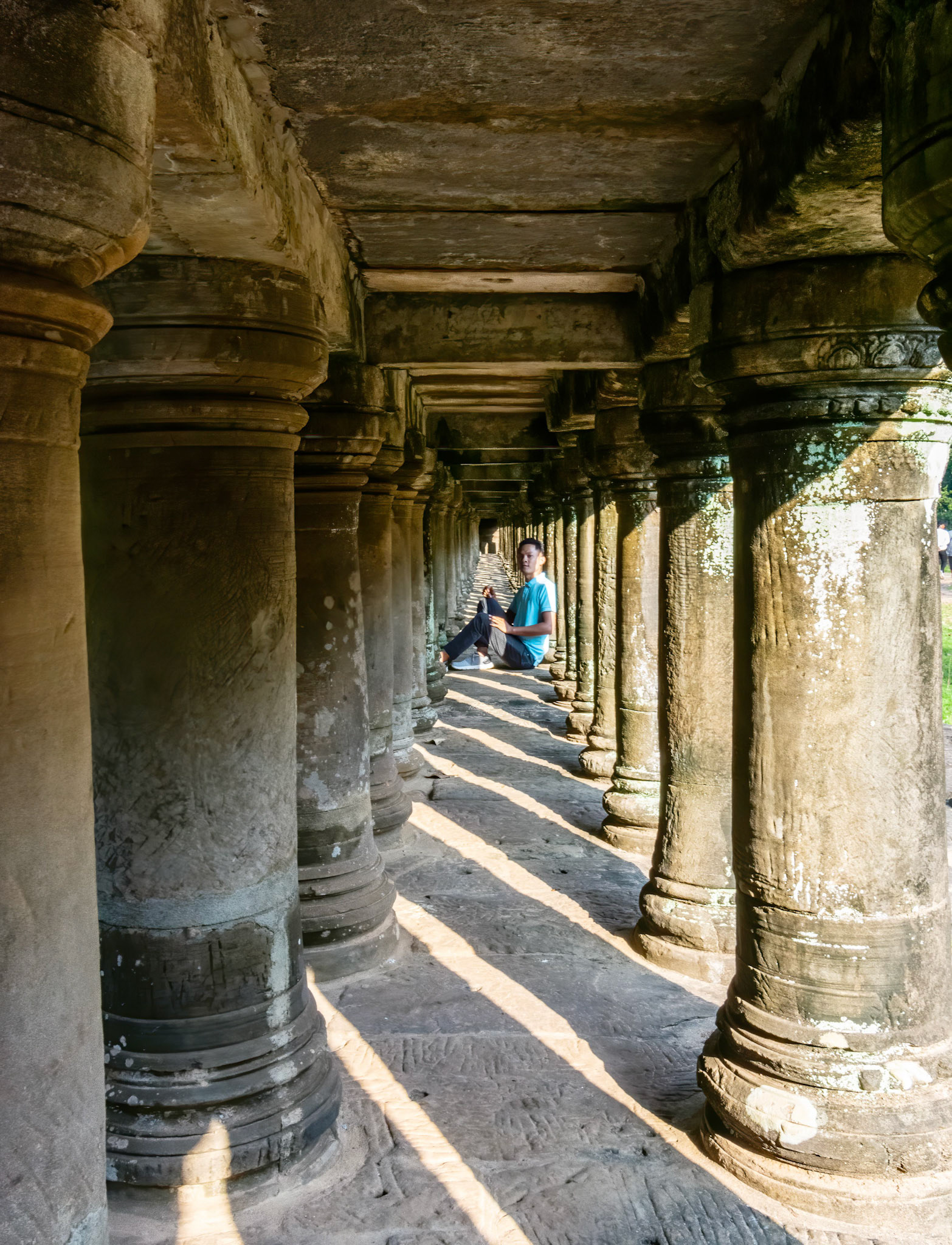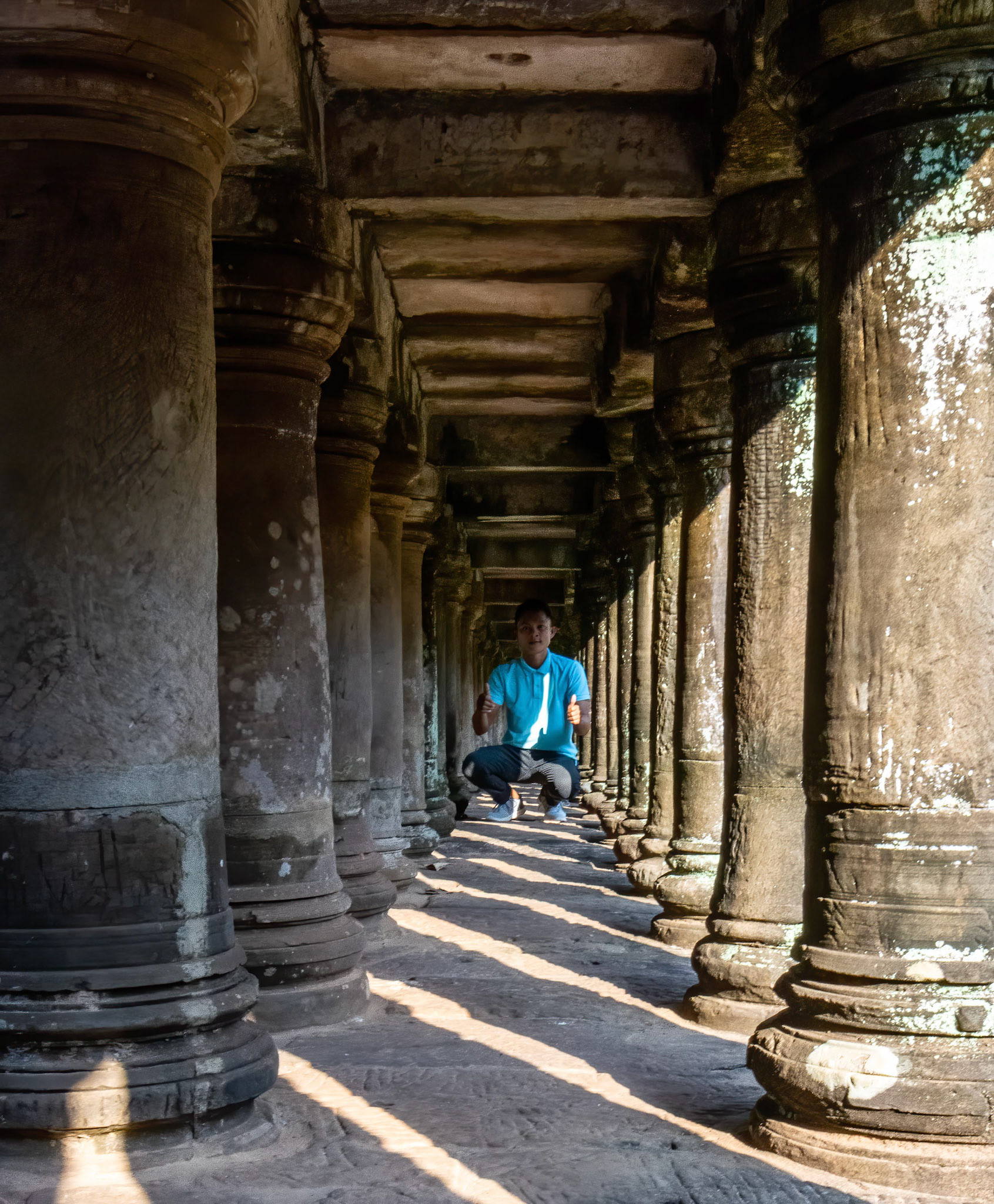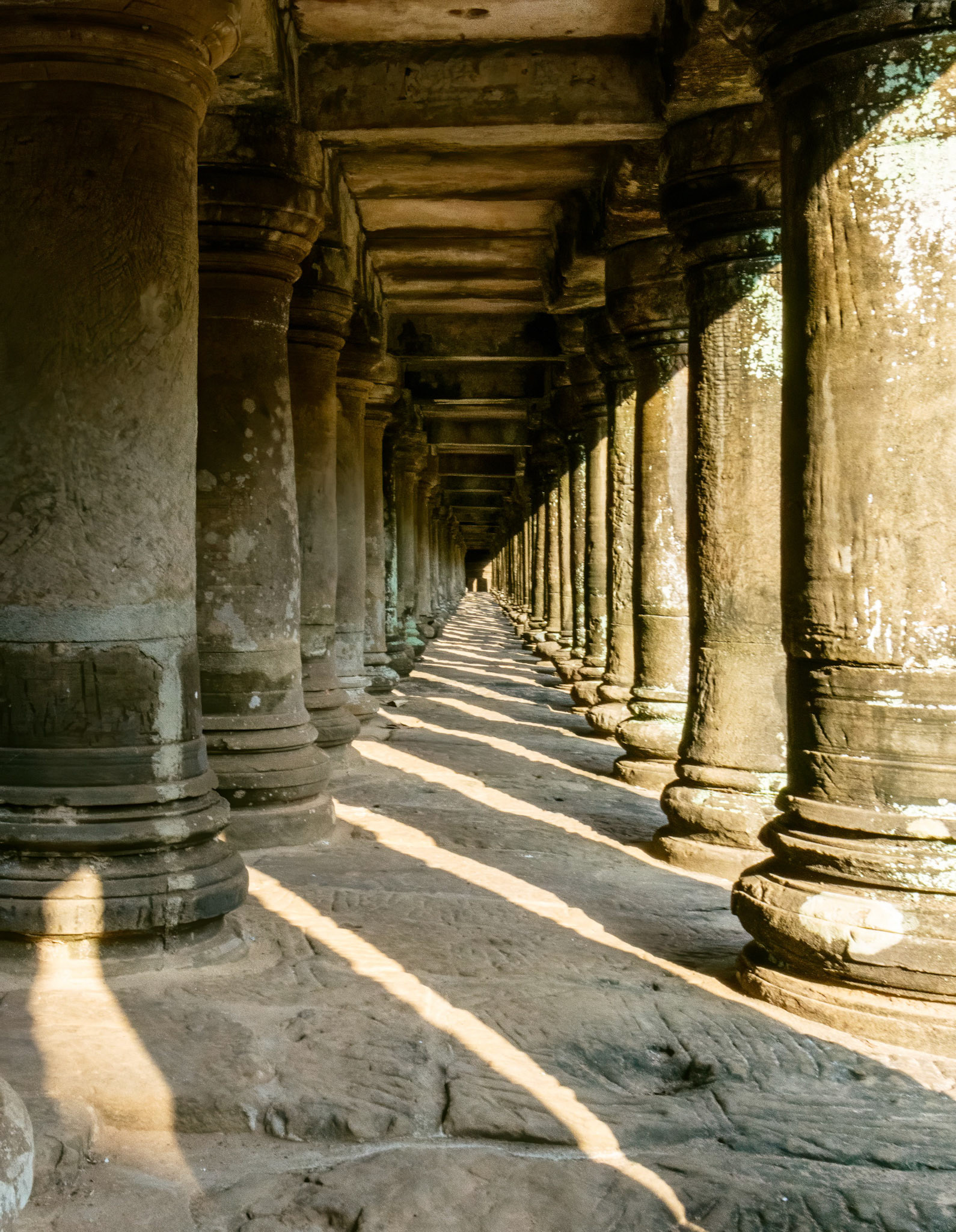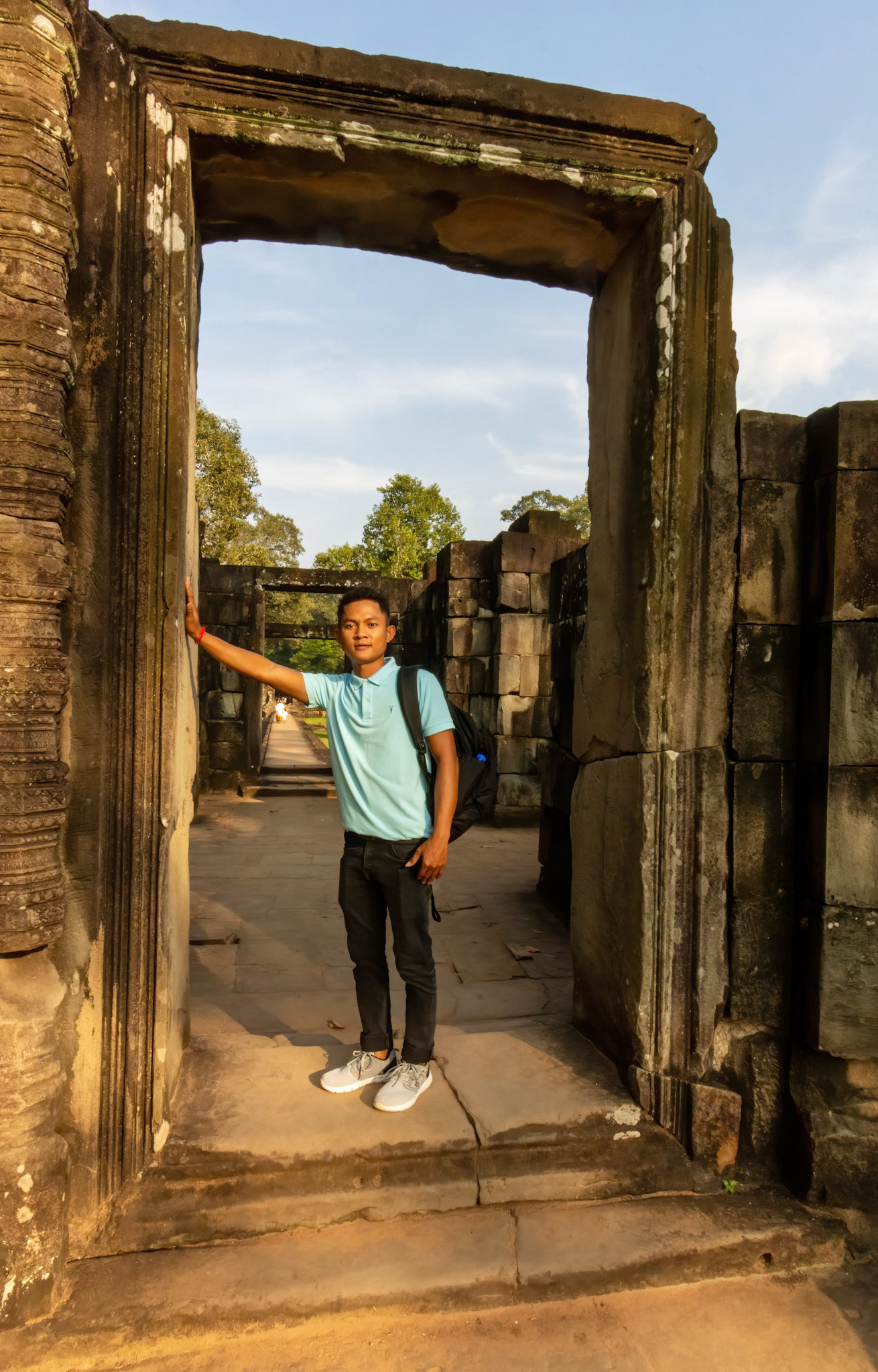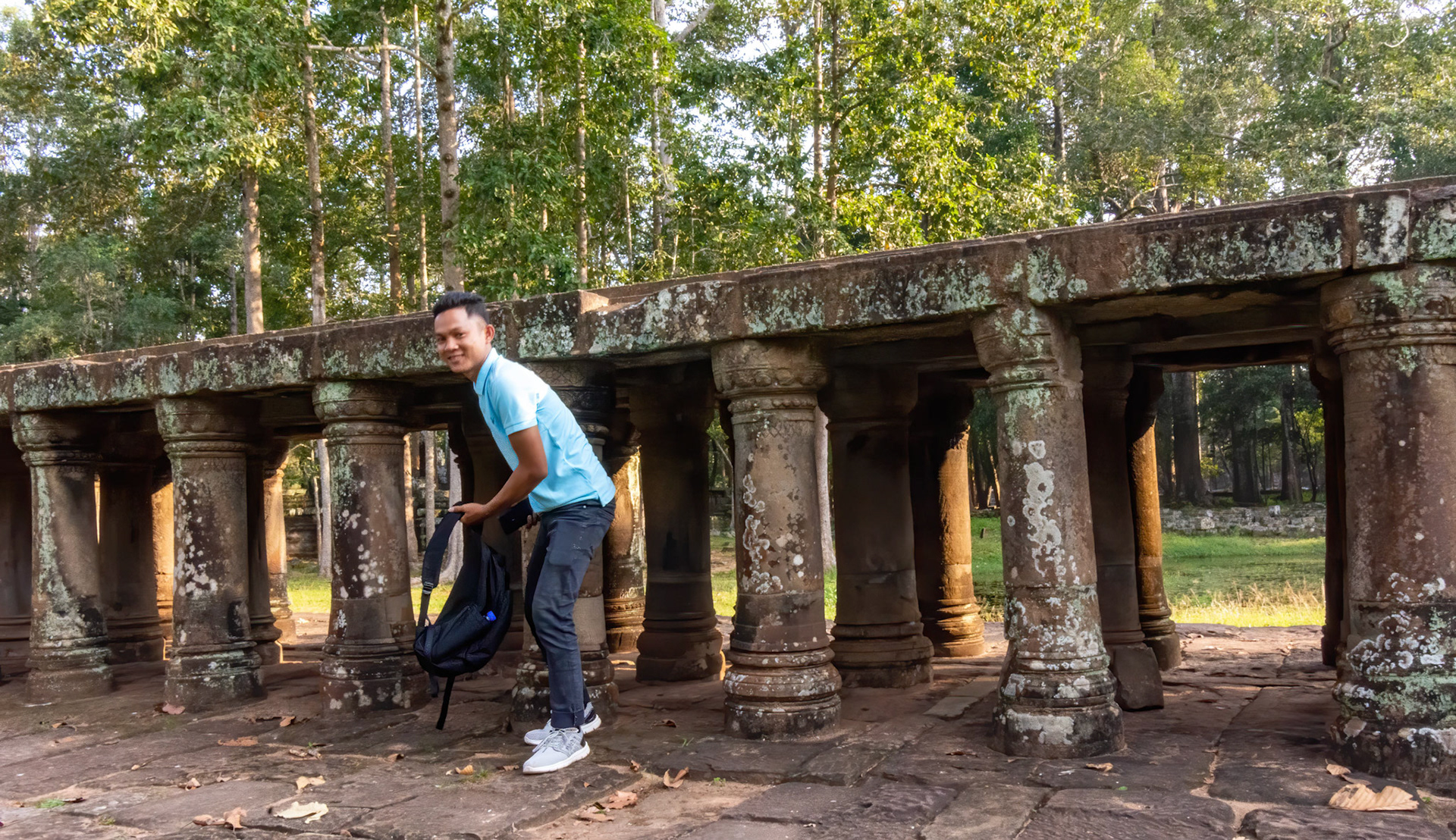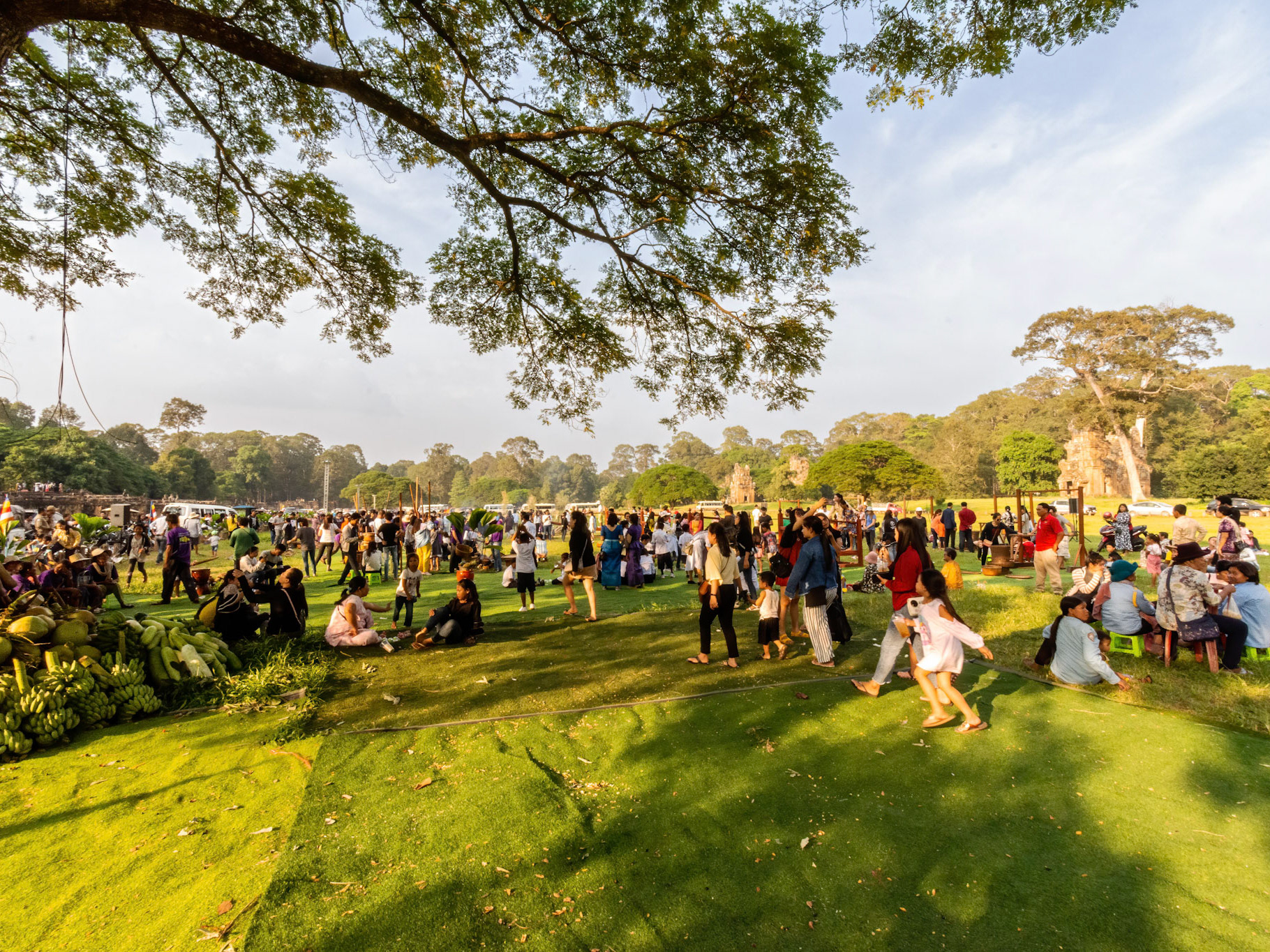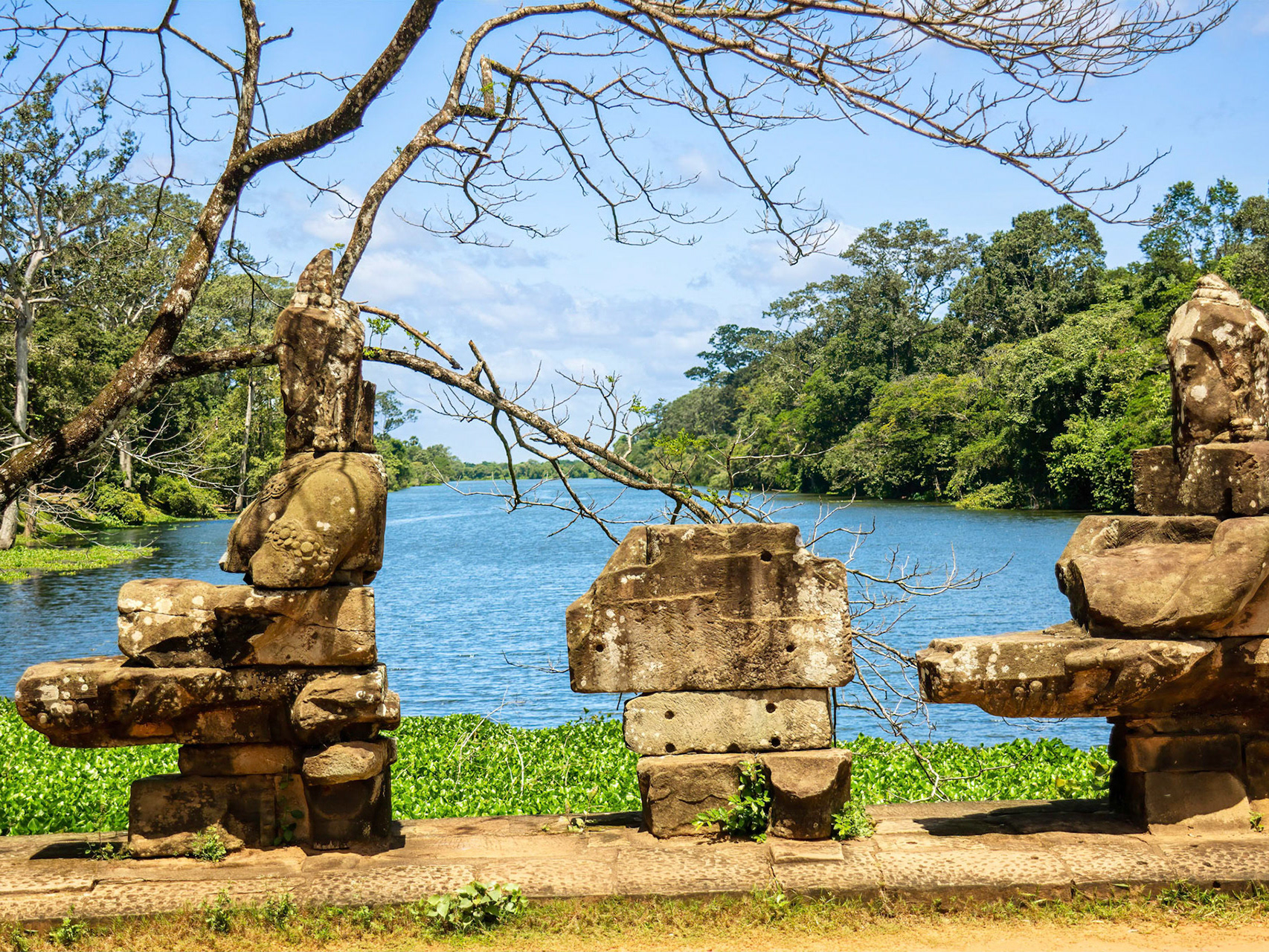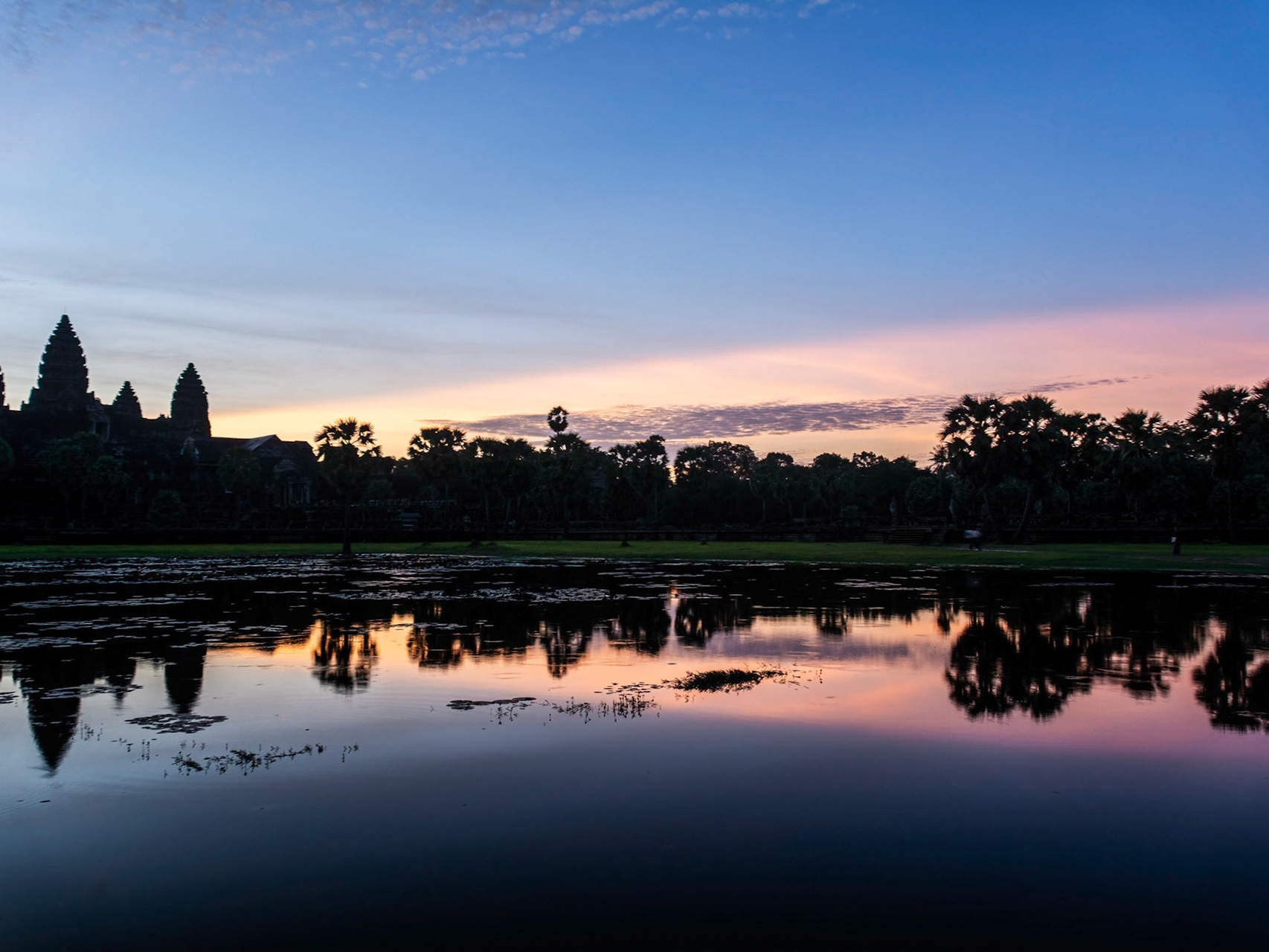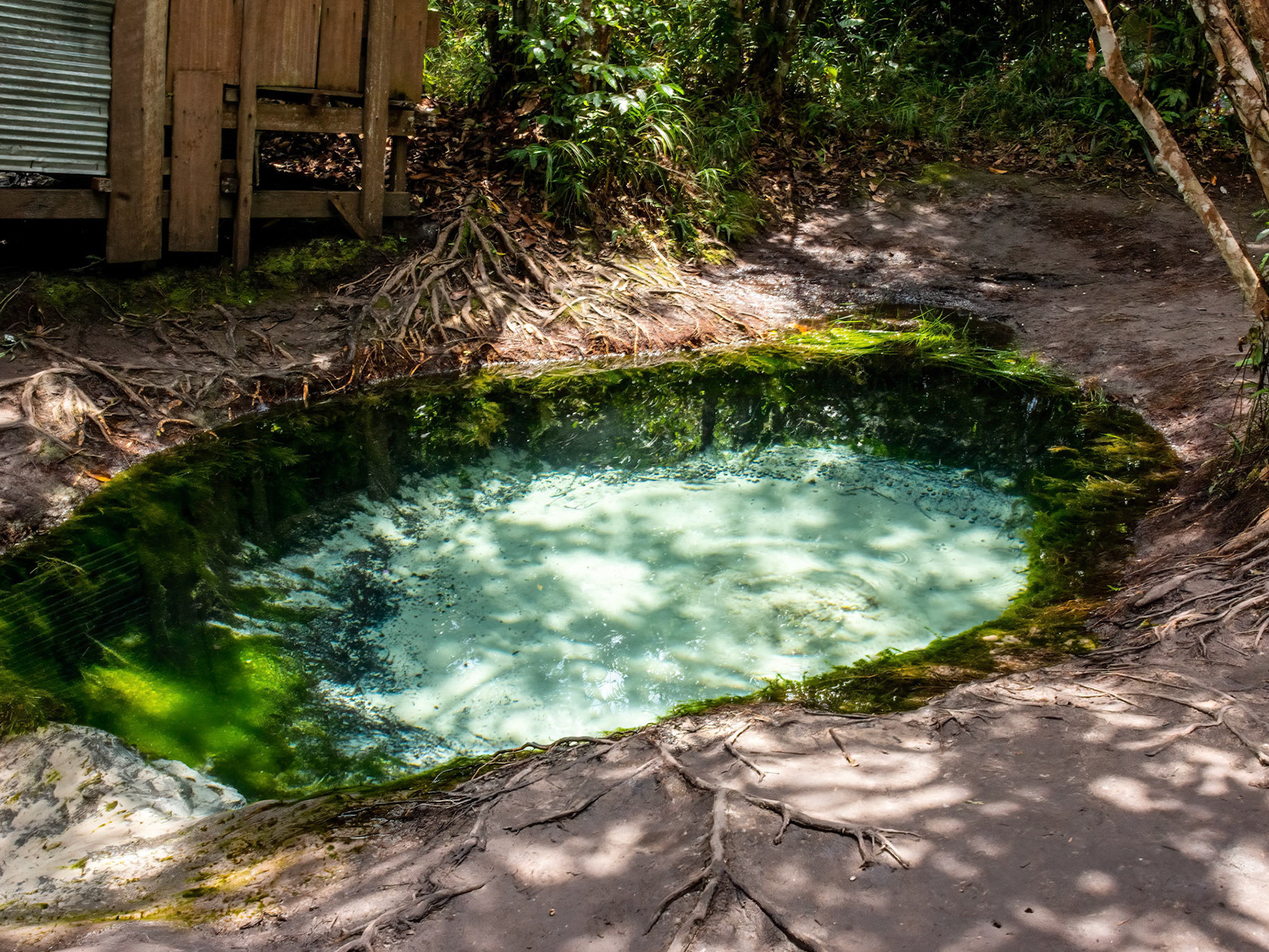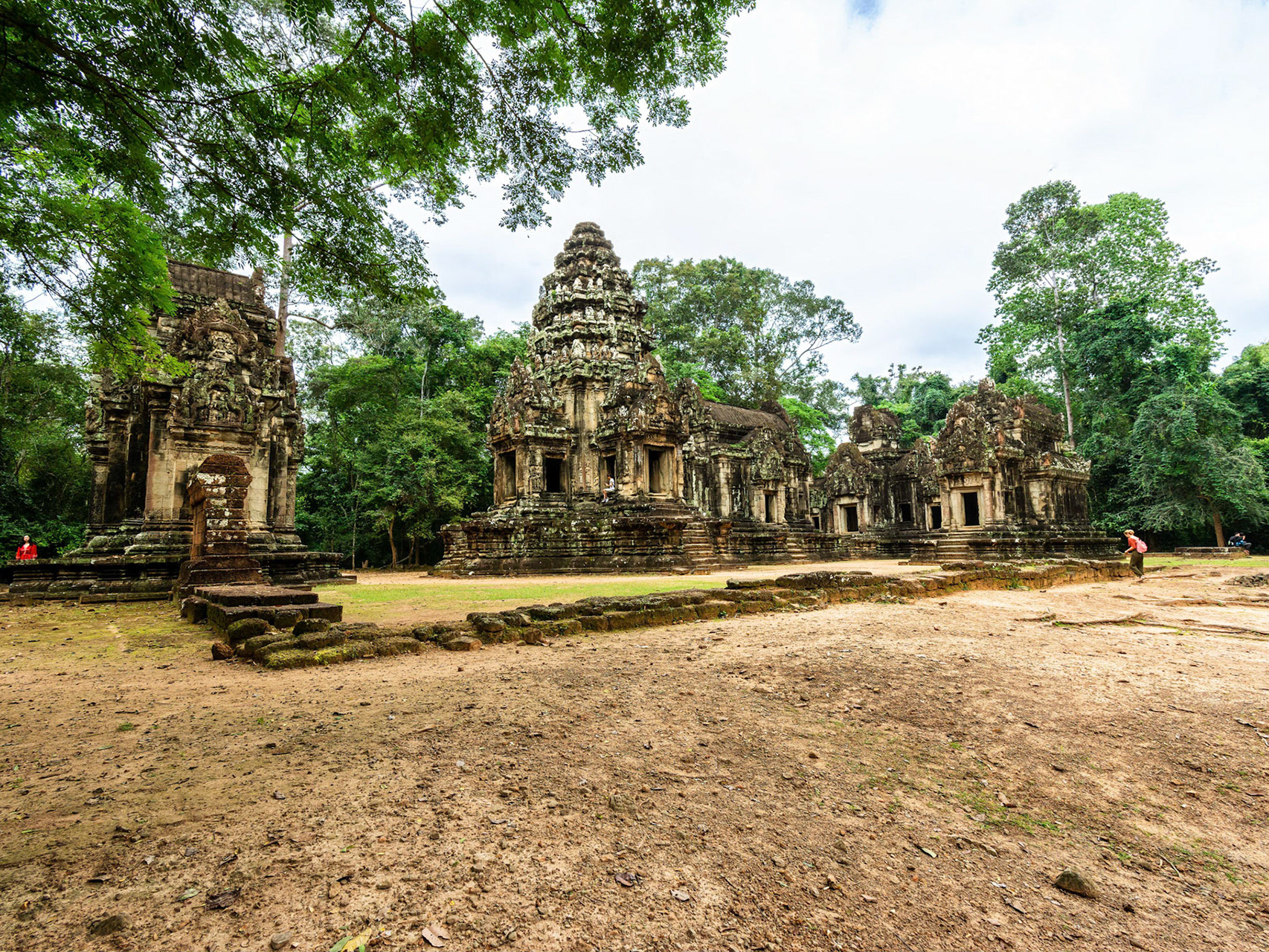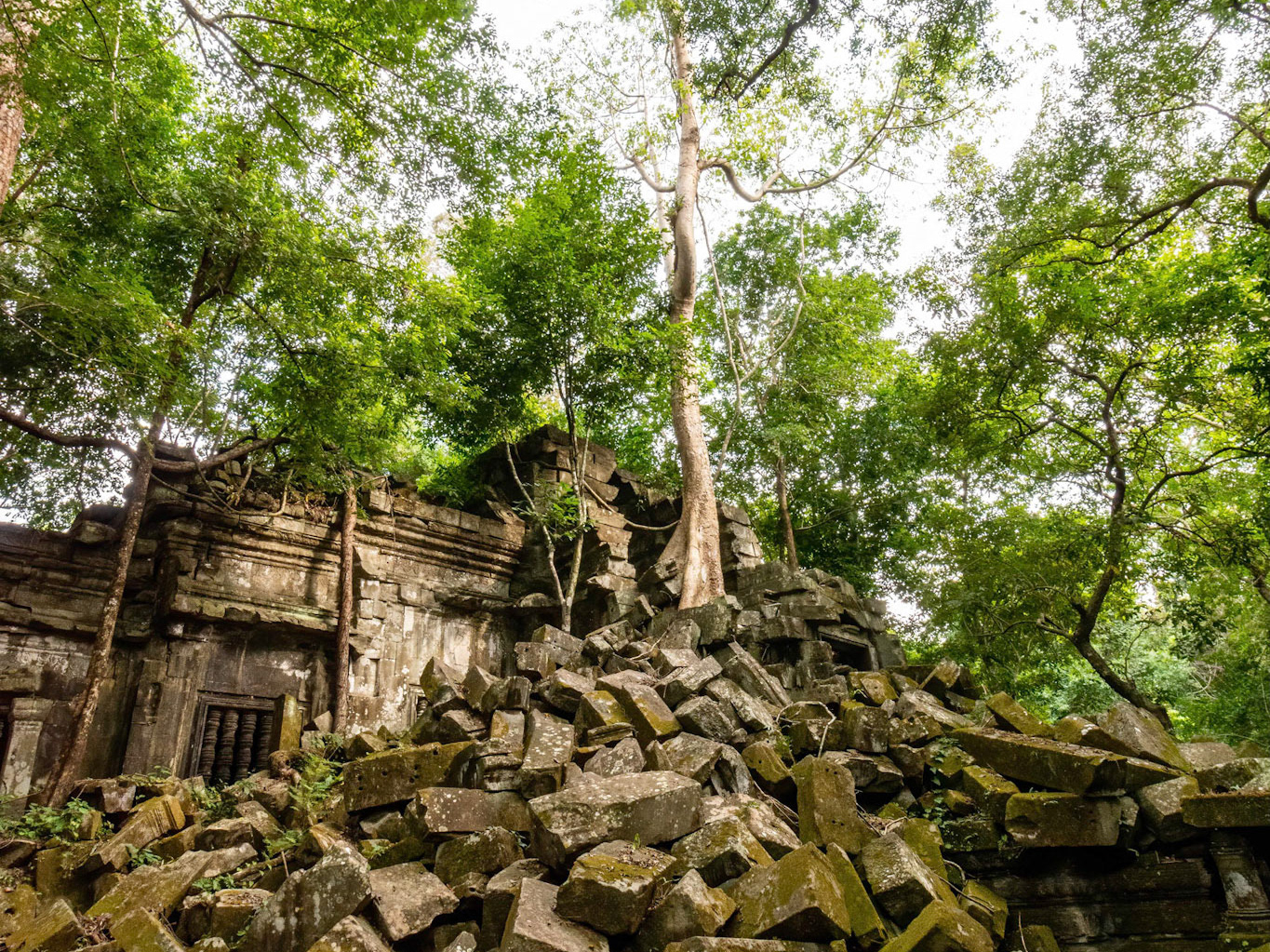This is the second of three pages covering Angkor Thom on the same day, the other two are: Angkor Thom South Side and Bon Om Touk.
1. Tonle Om Gate (South Gate) ខ្លោងទ្វារទន្លេអុំ (ខ្លោងទ្វារខាងត្បូង)
We crossed the causeway and went through the Tonle Om Gate (South Gate) ខ្លោងទ្វារទន្លេអុំ (ខ្លោងទ្វារខាងត្បូង) into Angkor Thom. The gate along with the 12km of walls that surround the square Angkor Thom quadrangle date from “the late 12th and early 13th centuries” and were commissioned by King Jayavarman VII. Each wall is bisected with a gate on each of the four cardinal points with the roads converging in a circuit at Bayon Temple; there is a fifth (Victory) gate just north of the East Gate (Gate of Death). The South Gate, through which we entered, is reported to be the best preserved and most fully restored of all the gates. The statues lining each side of the causeway depict the Hindu Churning of the Ocean myth; “On the left side of the moat, 54 'devas' (guardian gods) pull the head of the snake 'Shesha' while on the right side 54 'asuras' (demon gods) pull the snake's tail in the opposite direction.” See Asian Historical Architecture.
We crossed the causeway and went through the Tonle Om Gate (South Gate) ខ្លោងទ្វារទន្លេអុំ (ខ្លោងទ្វារខាងត្បូង) into Angkor Thom. The gate along with the 12km of walls that surround the square Angkor Thom quadrangle date from “the late 12th and early 13th centuries” and were commissioned by King Jayavarman VII. Each wall is bisected with a gate on each of the four cardinal points with the roads converging in a circuit at Bayon Temple; there is a fifth (Victory) gate just north of the East Gate (Gate of Death). The South Gate, through which we entered, is reported to be the best preserved and most fully restored of all the gates. The statues lining each side of the causeway depict the Hindu Churning of the Ocean myth; “On the left side of the moat, 54 'devas' (guardian gods) pull the head of the snake 'Shesha' while on the right side 54 'asuras' (demon gods) pull the snake's tail in the opposite direction.” See Asian Historical Architecture.
2. Baphuon - ប្រាសាទបាពួន
About 200 metres north west of Bayon the entrance to Baphuon is through a gatehouse and along a long elevated stone causeway. Constructed originally as a state Hindu temple sometime between 1050-1066 CE it was ‘converted’, with destruction to its outer galleries, to Buddhist use in the 16th century.
Asian Historical Architecture suggests that originally it could have “been sheathed in bronze plates” based on writings by “Zhou Daguan, a Chinese 'ambassador' in the 13th century” who described it as a copper tower. He could, however, have been describing the effect of the late afternoon sun on the stone which does give a coppery sheen. I didn't see and no source I've looked at suggests there are remnants of anchor points in the stone that bronze plates would have required.
Restoration work, involving dis and reassembly, began in the early 1970’s which “had to be abandoned in the 1970s when the Khmer Rouge came to power.” Work recommenced in 2002, and most stones were put in their correct place despite records being lost or destroyed in the Khmer Rouge period.
About 200 metres north west of Bayon the entrance to Baphuon is through a gatehouse and along a long elevated stone causeway. Constructed originally as a state Hindu temple sometime between 1050-1066 CE it was ‘converted’, with destruction to its outer galleries, to Buddhist use in the 16th century.
Asian Historical Architecture suggests that originally it could have “been sheathed in bronze plates” based on writings by “Zhou Daguan, a Chinese 'ambassador' in the 13th century” who described it as a copper tower. He could, however, have been describing the effect of the late afternoon sun on the stone which does give a coppery sheen. I didn't see and no source I've looked at suggests there are remnants of anchor points in the stone that bronze plates would have required.
Restoration work, involving dis and reassembly, began in the early 1970’s which “had to be abandoned in the 1970s when the Khmer Rouge came to power.” Work recommenced in 2002, and most stones were put in their correct place despite records being lost or destroyed in the Khmer Rouge period.




